Hello Hive,
I'm back with another travel story that I've been longing to share with all of you. Being the explorative type of individual, I've tried my best to discover as many wonderful places around the world during my lifetime for the past several years.
Well, I can truly say that I'm extremely grateful to have landed in this part of our planet. There are lots of marvelous destinations globally, but I consider the beautiful memories of this exotic location as one of my favorite experiences of wanderlust.
Due to the overall length of this post, I'm dividing this travel story into 2 articles for your reading pleasure.
The Last Frontier of the North
If you look at the map of the Philippines, Batanes is the northernmost province of the country. It is an archipelagic section of the Cagayan Valley region and is the smallest both in the population of people and in its landmass area. Its capital city, Basco, is situated on the island of Batan.
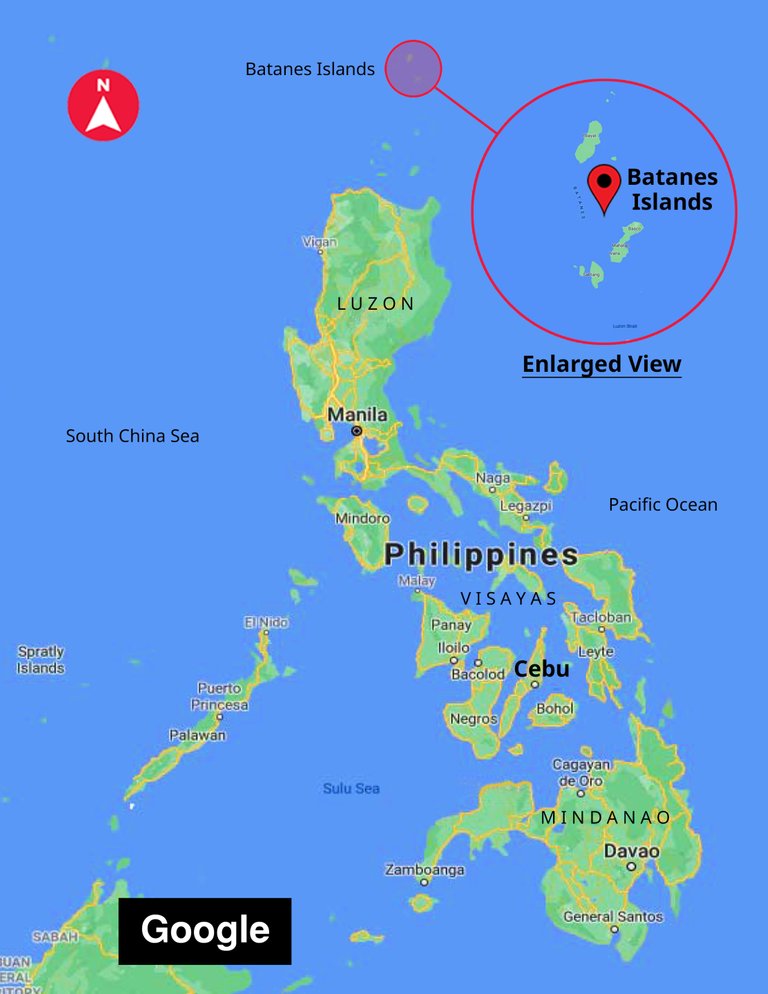
The whole province of Batanes has a total land area of 219.01 square kilometers (84.56 sq miles) and comprises 10 islands situated inside the Luzon Strait between the Balintang Channel and Taiwan. These islands are not densely occupied by a human populace and are subjected to frequent tropical storms and typhoons. The 3 largest islands of the province are Batan. Sabtang, and Itbayat and are the only inhabited ones.
Geographical Background
This group of islands has an approximate location of 162 kilometers (101 miles) north of the nation's Luzon mainland and 190 kilometers (120 miles) south of the country of Taiwan. The entire province is included in the temporary list of UNESCO World Heritage Sites and, is in fact, the oldest on the record since its nomination in 1993 belonging under the category of "cultural site".
Batanes is home to the Ivatan ethnic group of people and they are believed to be one of the earliest inhabitants of the Philippines.
Guide Map of Batanes Landmarks
Attached is a satellite map of 2 of the 3 largest and inhabited islands of Batanes: Batan and Sabtang. I spent 4 days here and these were the only areas we covered during this trip due to our limited time. Itbayat Island was not included in our tour itinerary.
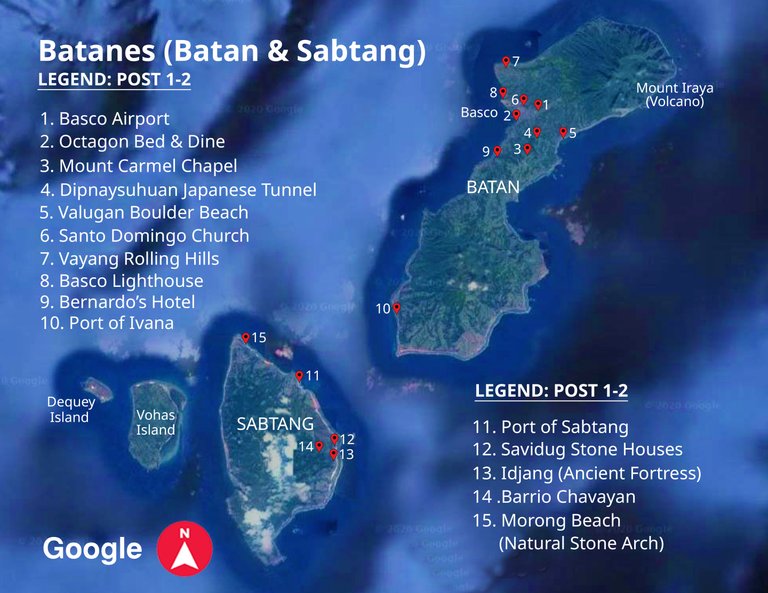
For your easy guidance, I've marked the important spots I've visited with red pins indicating their corresponding numbers on the satellite map so this would help you know their respective locations on the islands.
I was traveling with some buddies and a gang of adventurous Filipinos as we took a plane ride from Manila, the capital city of the Philippines, and flying northwards to the remote province of Batanes. So get ready and fasten your seat belts as we journey to this exotic destination from the sky.
1. Basco Airport
This is the main airport serving the islands and is situated in Basco, the capital city of the province of Batanes. There are currently 2 domestic airports in the province, one of which is in Itbayat Island.
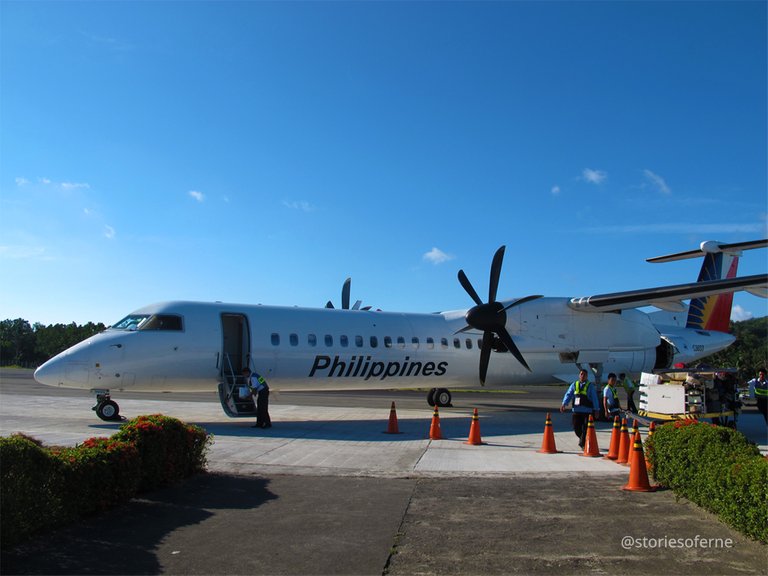
To be honest, this was one of the scariest airplane landings I've ever encountered in my life. Why? Not because I don't trust the pilots (they were excellent during the flight of course) but because the airport of Basco has one of the shortest runways I've seen compared to others around the world. It was definitely me whose heart was beating faster than normal due to this realization! The runway measures around 1,244 meters (4,081 feet) with an elevation of 89 meters (291 feet). God forbid, if the pilots didn't step on the landing brakes on time, we could have crashed at the foot of Mount Iraya, a dormant volcano situated after the end of the airport's runway.
However, everything went well and we landed safely during the early morning hours at Basco Airport. And as we disembarked from the plane, the weather was certainly a welcoming bright sunny day as it was during the summer month of May that this trip occurred. I immediately struck a pose at the airport's humble welcome signage "Kapian kamu pa nu Dios!", an Ivatan phrase that means "May our God bless us all always!" in English.
Inside the airport lounge, we were greeted by a visual treat of info boards, wooden artifacts, a photo gallery, model stone houses, and some antique clocks and other interesting displays.
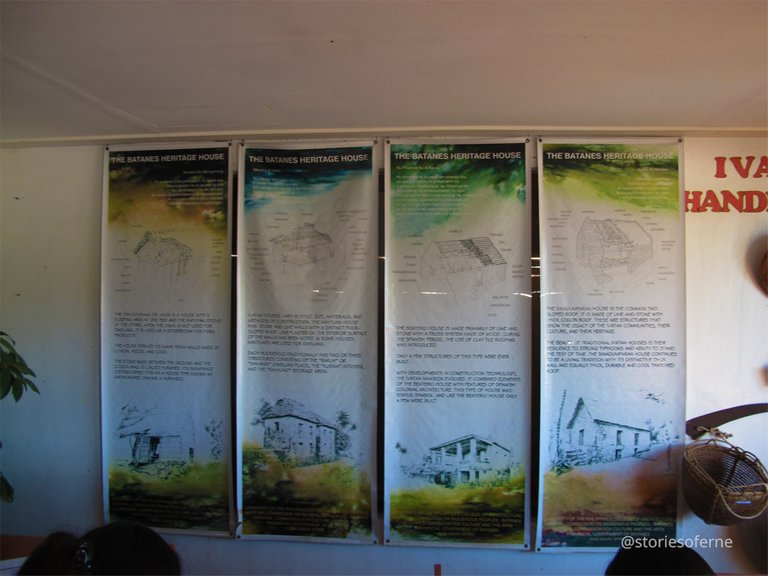
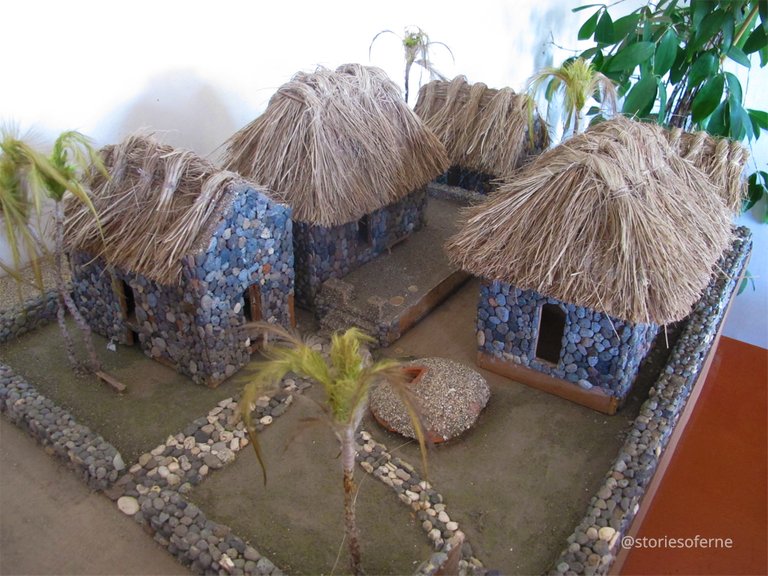
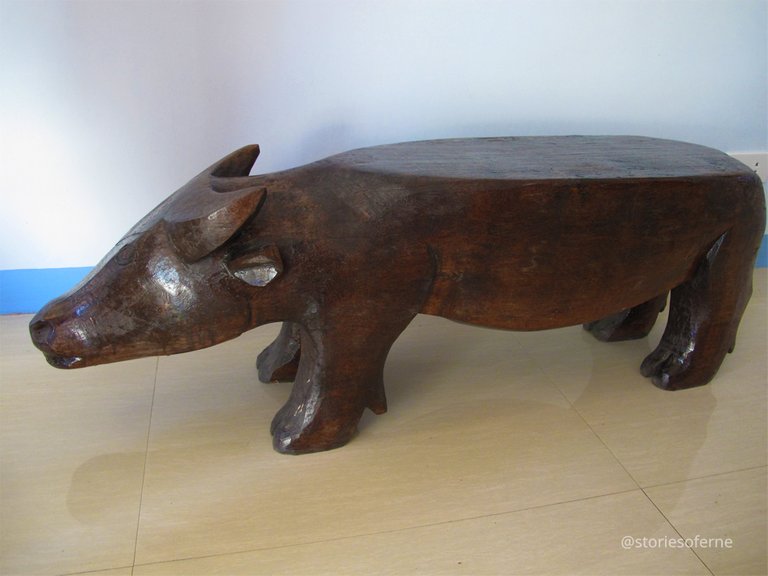
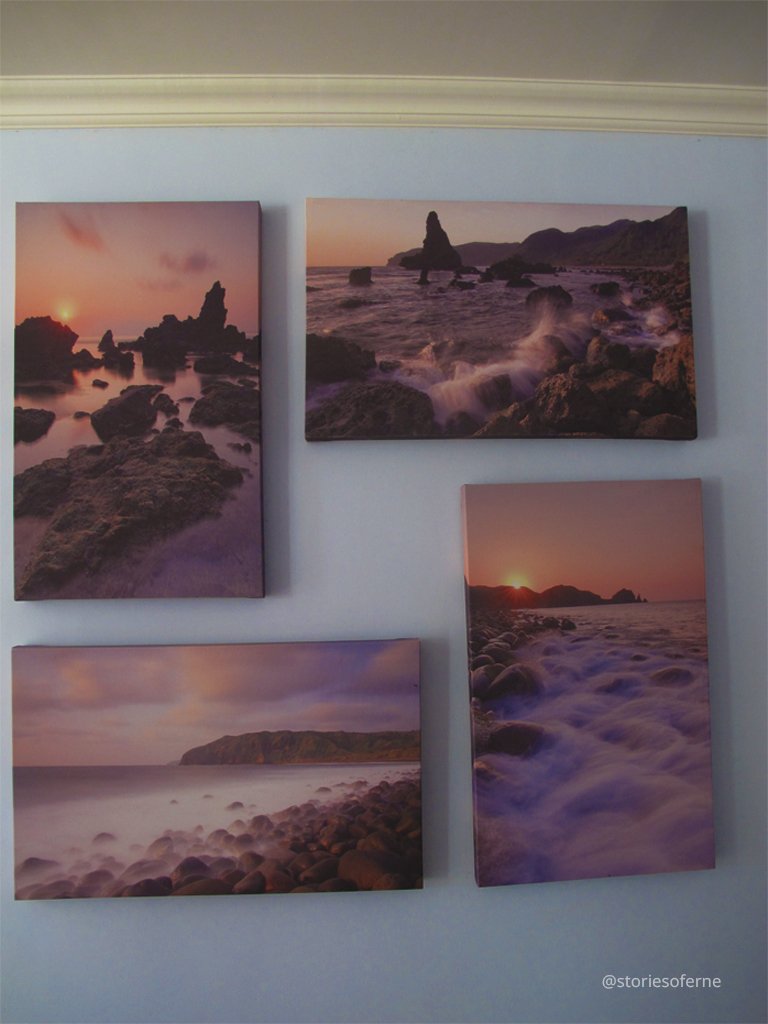
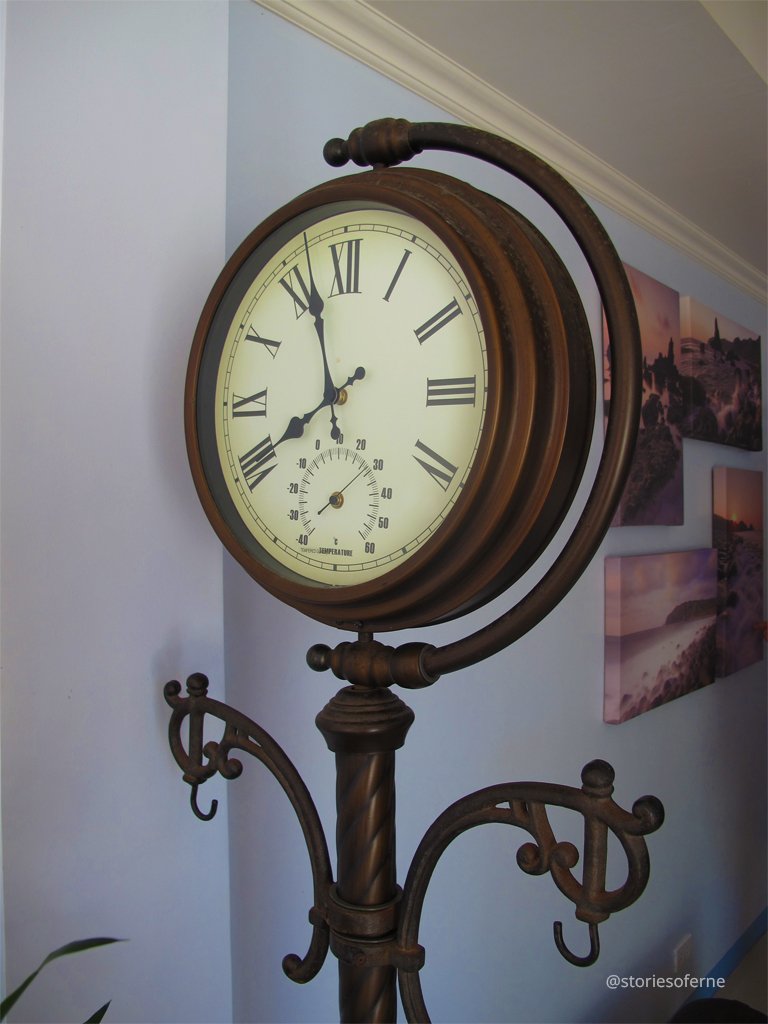
After we claimed our luggage and completed all necessary airport processes, we were transported directly to our hotels in preparation for our first event of Day 1: brunch!
2. Octagon Bed and Dine
This unique restaurant was just a few minutes away from our accommodation. True to its name, this dining establishment has an octagon-shaped layout and served local Ivatan cuisine including their own twist of popular Filipino dishes.
Inside, there were various locally crafted wooden furniture, group kiosks, and other displayed artifacts that formed part of the rustic atmosphere of the place. There was also an incorporated inn available at the lower levels in case tourists wished to stay at their accommodation.
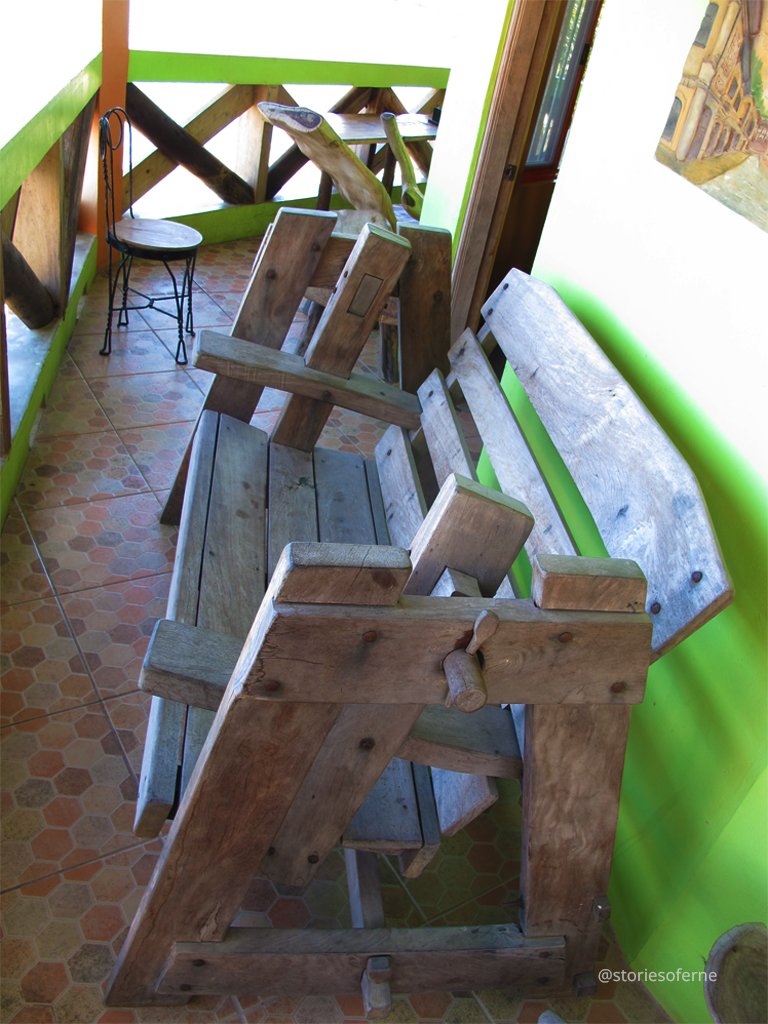
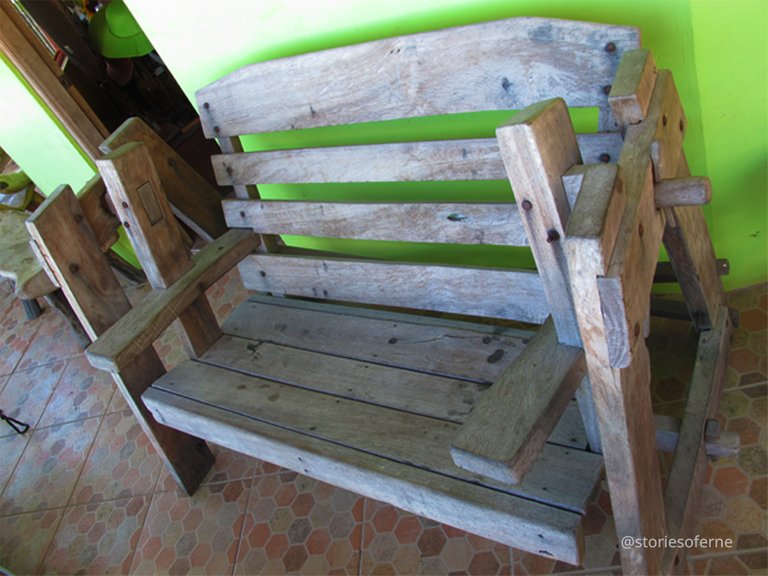
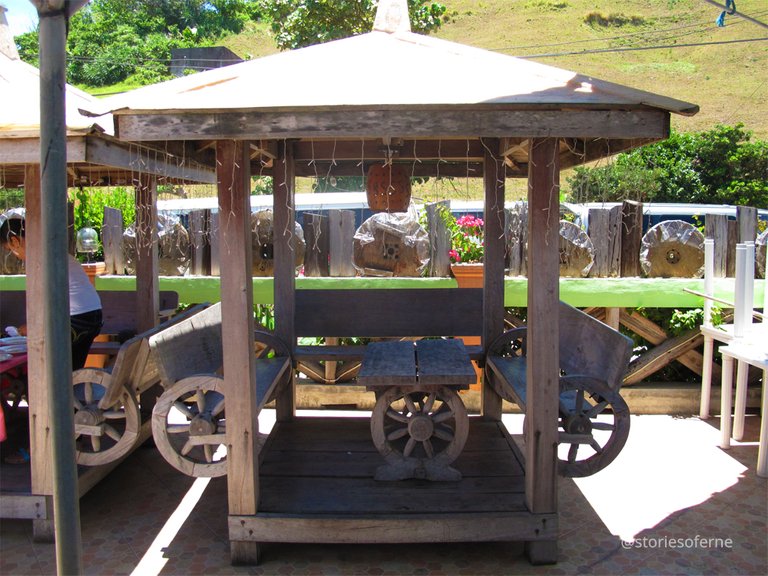
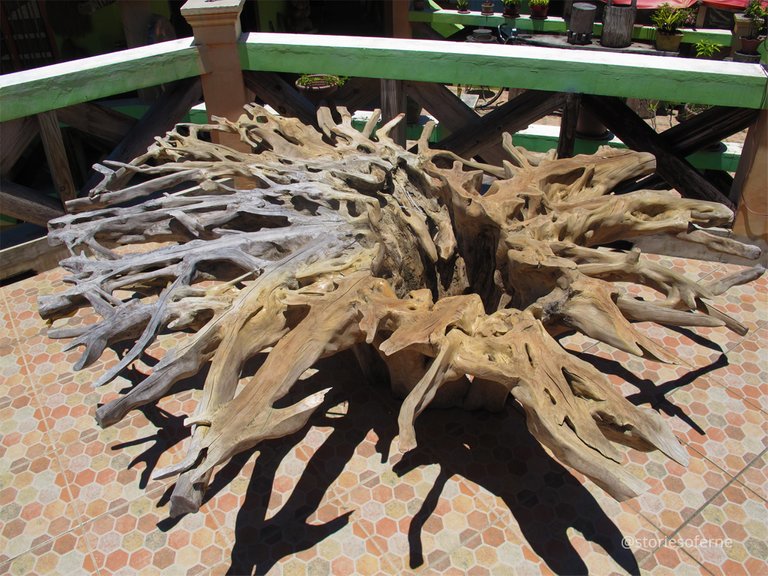
From the restaurant, you could enjoy a panoramic view of the nearby hills (a goat was clearly watching us), Basco port, Naidi Hills Lighthouse, and the wide blue expanse of the West Philippine Sea.
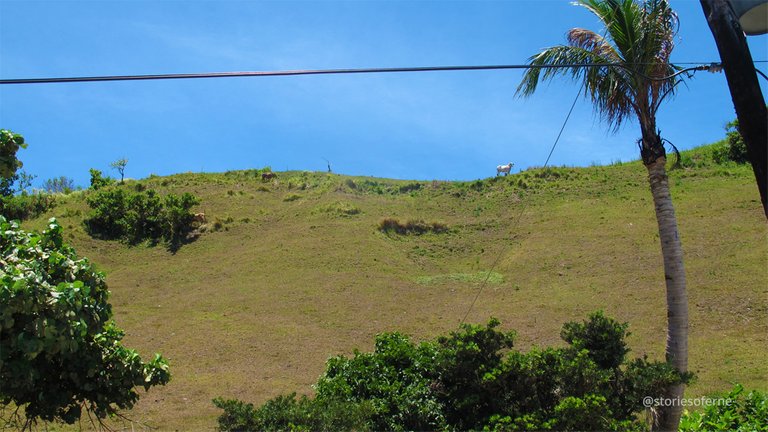
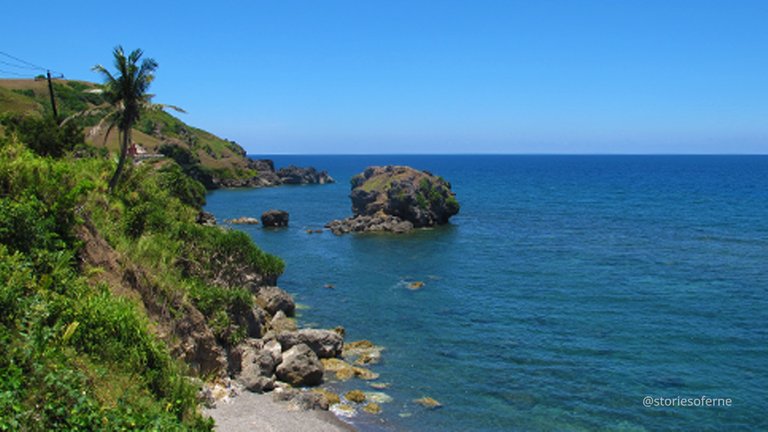
After our hearty brunch, we then proceeded to our tourist vans to get ready for the next landmark. It was the perfect time to burn the calories away after stuffing ourselves with a lot of delicious food. Burp!
3. Mount Carmel Chapel (Tukon Church)
Batanes has been described in many imaginative ways, and one of the nicknames it has earned over the years is "Home of the Winds". It is said to be a place where one can truly listen to the calm whispers of God. It's a province where peace, tranquility, and serenity abounds as clearly depicted in the numerous churches it holds. One of the several sacred buildings of great significance was the Mount Carmel Chapel, also popularly known as Tukon Church.
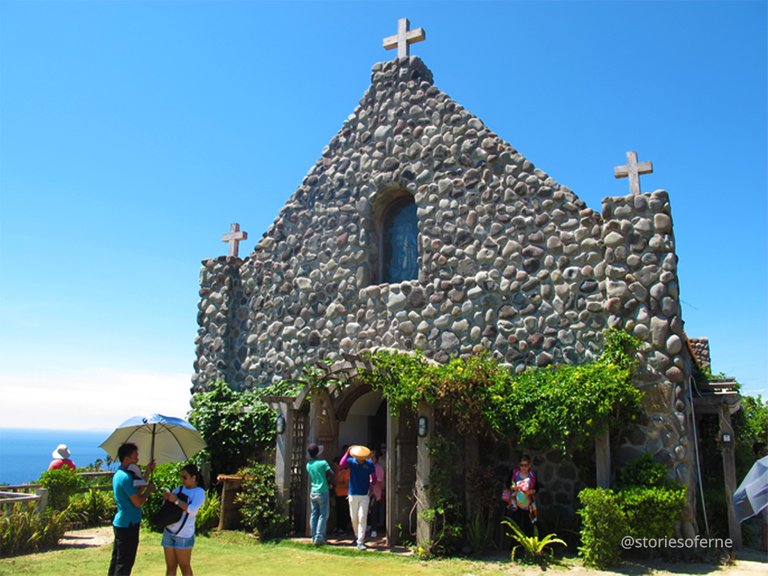
The basic architecture of the church was inspired by the traditional Ivatan stone dwellings. This religious endeavor was commenced by the influential Abad family who with the collective efforts of local masons, carpenters, and craftsmen of the neighboring communities, built this prominent edifice so that the Roman Catholic faithful wouldn't have to travel far away to attend mass services.
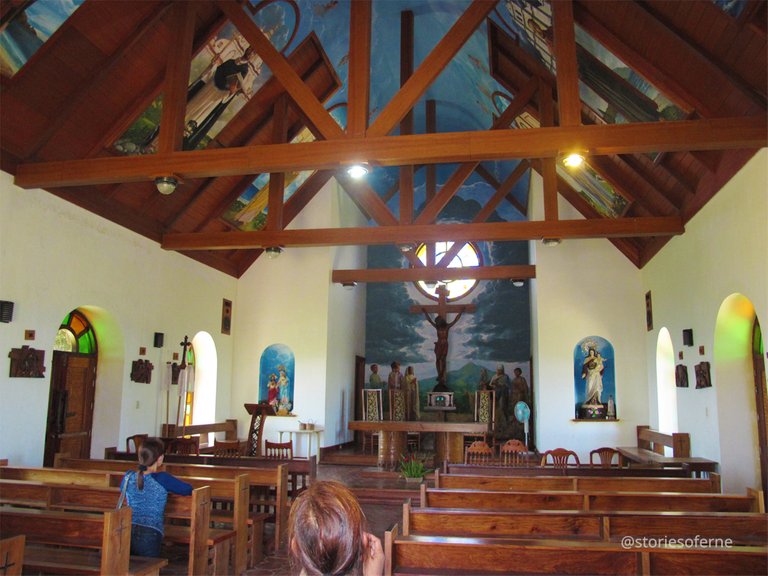
I really admired the chapel's exterior and interior because of its design simplicity and its adaptation to the vernacular architecture of the area. Its roof was constructed of concrete red bricks and its magnificent ceiling was colorfully adorned with various beautiful paintings of municipal saints skillfully handcrafted by local Ivatan artists.
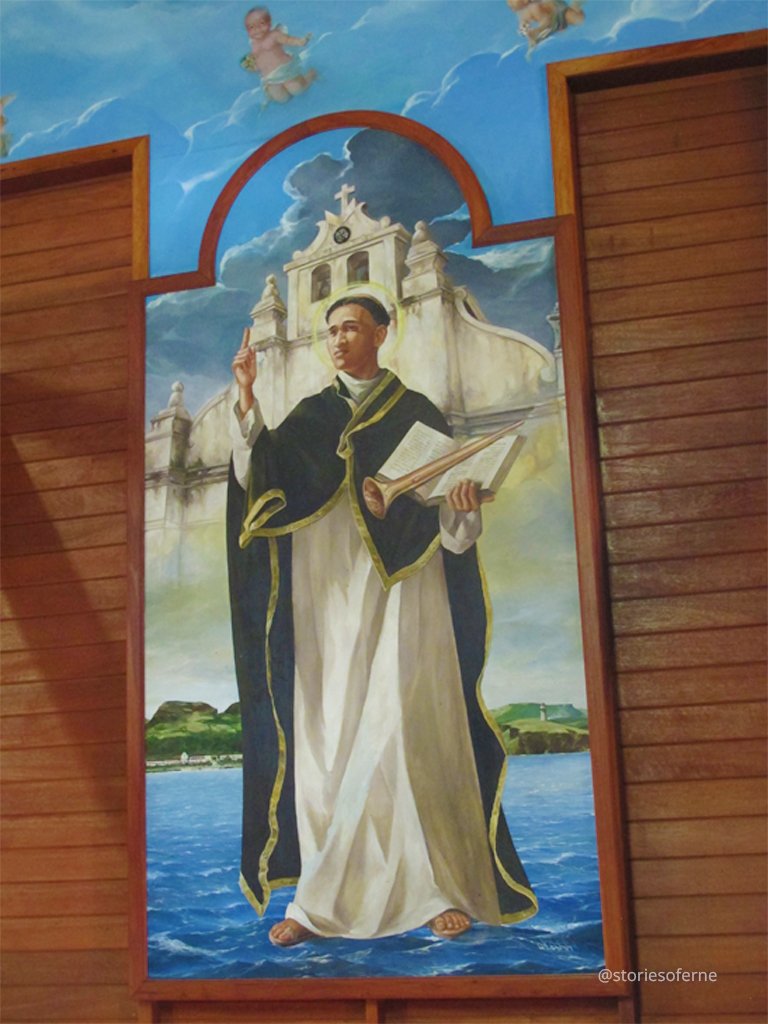
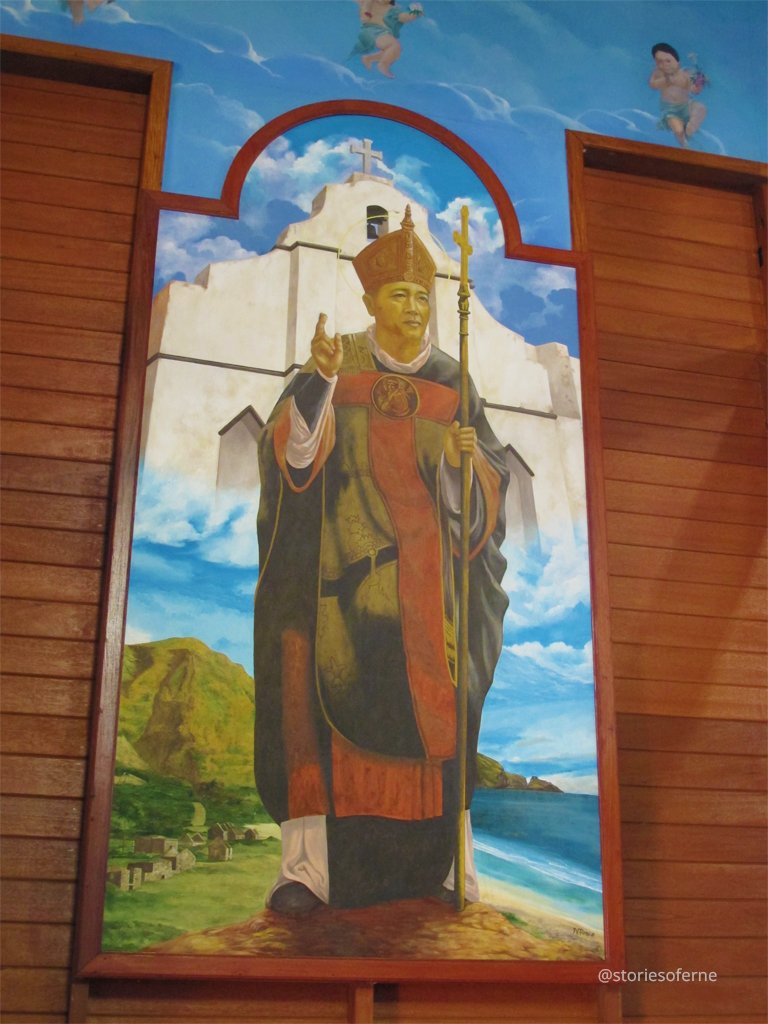
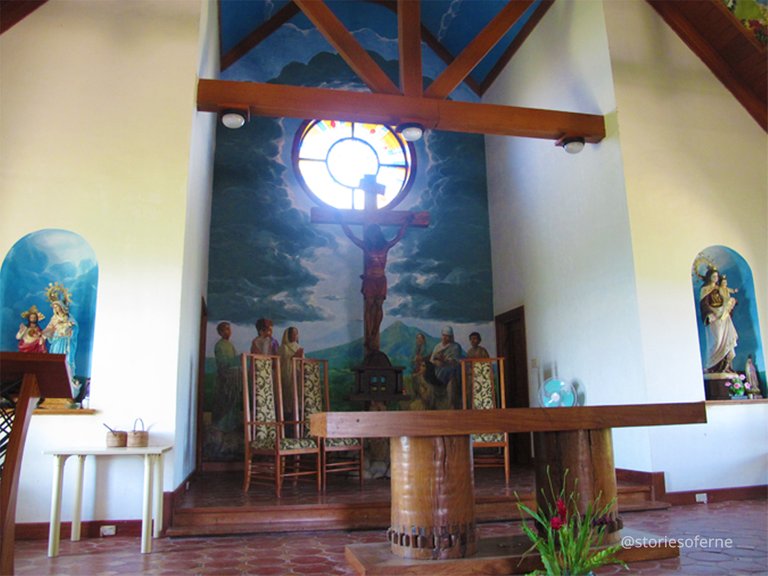
Incorporated on the upper portion of the chapel was a raised floor level housing the choir area accessed via a circular staircase below.
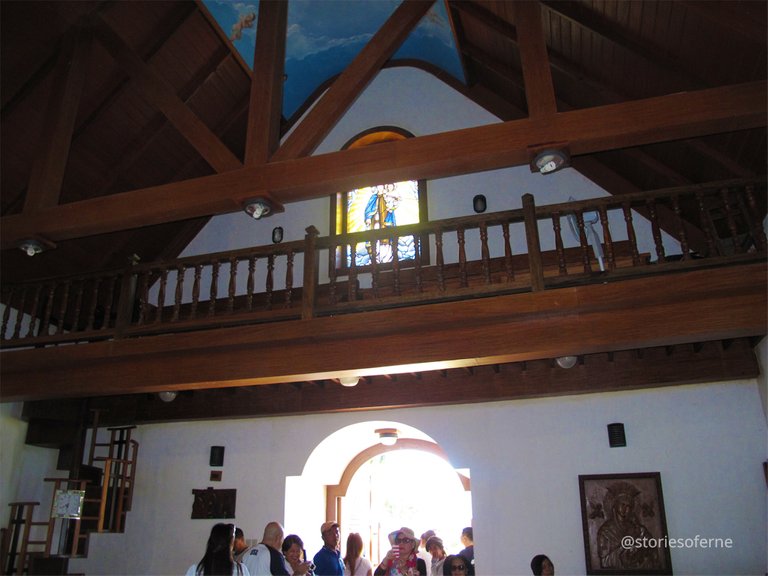
From the chapel, I took a short walk to the nearby PAGASA Weather Station (known locally as the Tukon Radar Station) to explore the surrounding neighborhood. This particular station used to be a lighthouse and was also utilized by the Americans as a weather station.
"Tukon" is an Ivatan word meaning mountain which is an appropriate name for the Mount Carmel Chapel, also known as Tukon Church, because of its strategic geographical location where you could experience the picturesque sceneries of Mount Iraya volcano, natural terrains of the hills, plus the magnificent seascapes of the West Philippine Sea and the Pacific Ocean.
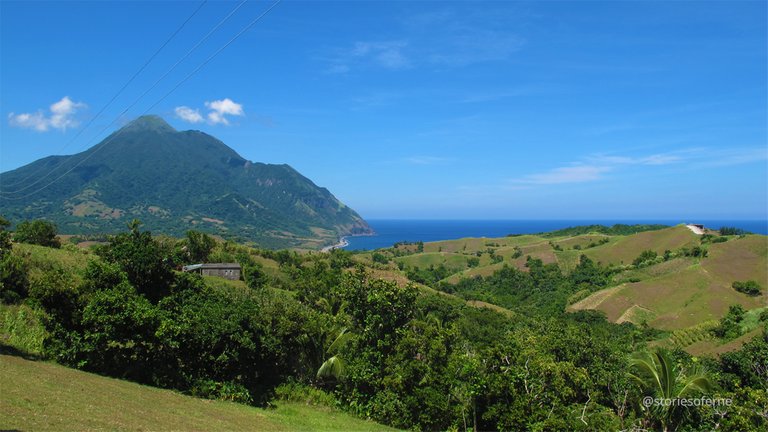
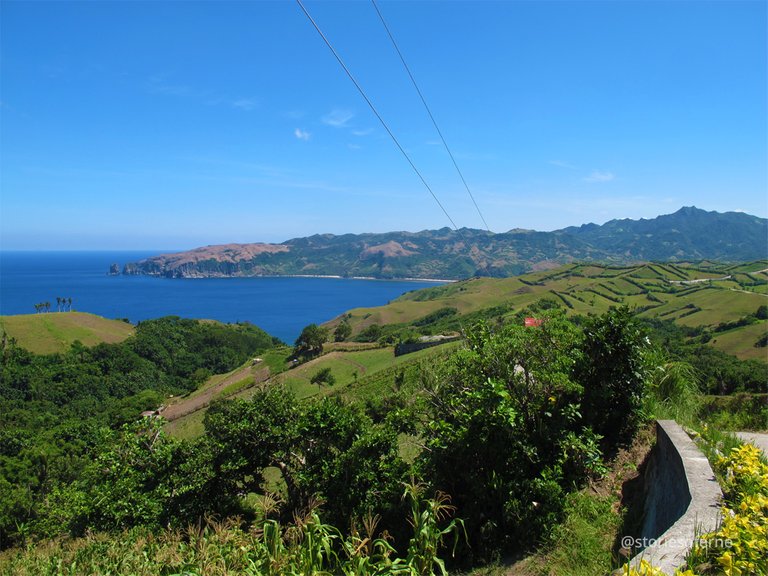
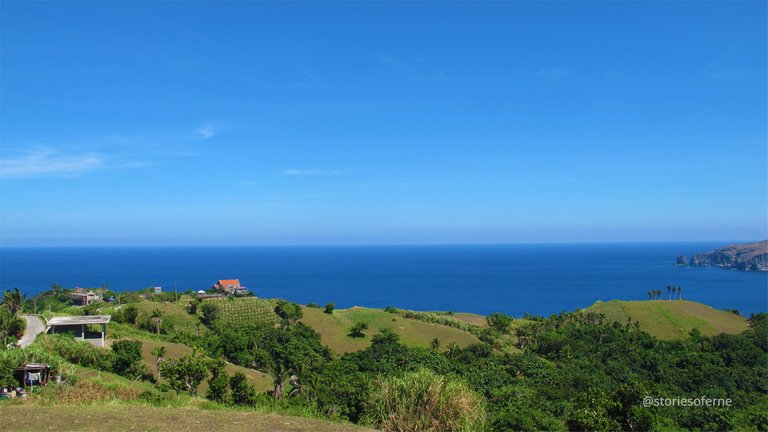
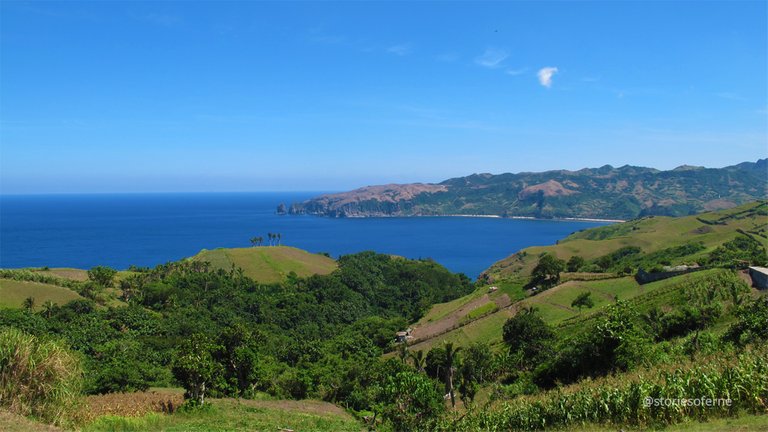
4. Dipnaysupuan Japanese Tunnel
The next landmark on the travel itinerary was a relevant piece of history hidden beneath the thick green landscapes of Batanes. Who would have thought that remnants from World War II would remain intact in this part of the province and provided strong evidence of the country's Japanese occupation?
The Dipnaysupuan Japanese Tunnel was 250 meters long, incorporated a lower chamber. and was built with volcanic rocks and cement. This tunnel mainly served as a war shelter for the Japanese soldiers during their arrival in Batanes in 1941.
The enclosed passages were dark and we had to use flashlights to guide our paths as we explored the rocks, holes, caverns, and walls within. Historically from 1941 to 1945, the Japanese soldiers ordered the Ivatans to excavate these tunnels and dig exit portals, chambers, and a water collecting cistern. This fortified bunker was their main lookout point during their warfare with the American soldiers.
5. Valugan Boulder Beach
Our next stop was this unique geographical feature that definitely froze our eyes as we arrived here. Nothing compared to this beachfront because I've never seen anything like this in other parts of the world! It was like landing on the surface of the moon or on another planet!
Valugan Boulder Beach was a natural work of art produced by the elements of Mother Nature. The rocky landscape became part of the remnants from the eruption of Mount Iraya volcano in 400 AD, which blew up and scattered andesite (a dark gay volcanic rock) boulders over the northern half of the island of Batan.
The resulting polished appearance of the rocks and pebbles of different sizes on the beach was due to the continuous sea waves of the Pacific Ocean pounding on them over the past millennia. Valugan is also an Ivatan term meaning East and signifies the eastern battle of the currents smashing the shorelines, winds whispering constantly, and boulders piling up all around thus producing a trance-like effect for visitors to experience.
6. Santo Domingo Church (Basco Cathedral)
Right after that remarkable beach escapade, we boarded our convoy of tourist vans and headed back to Basco, the capital city, where It was time to offer our devotions and gratitude to the central church of the province.
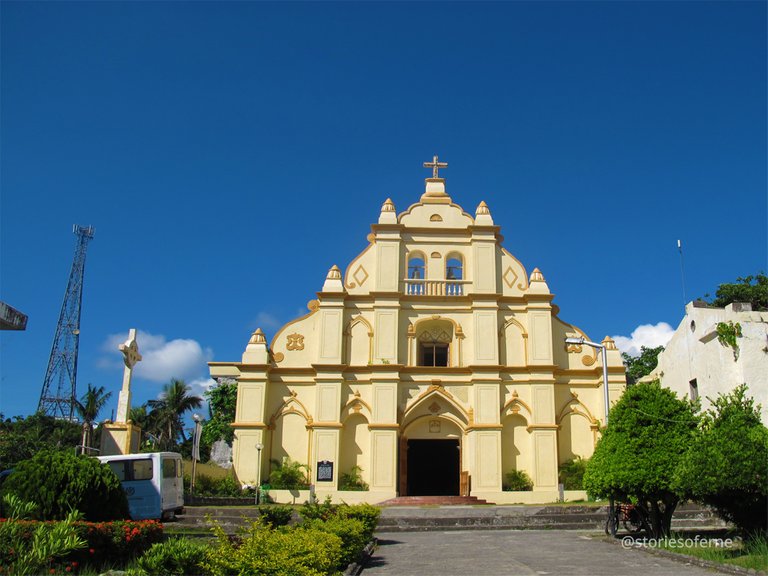
The Santo Domingo Church, also known locally as the Basco Cathedral, was a religious building initially dedicated to Our Lady of the Immaculate Conception, the patroness of Batanes to commemorate the establishment of the first church. The holy statue was said to have been brought to the islands during an expedition in 1783.
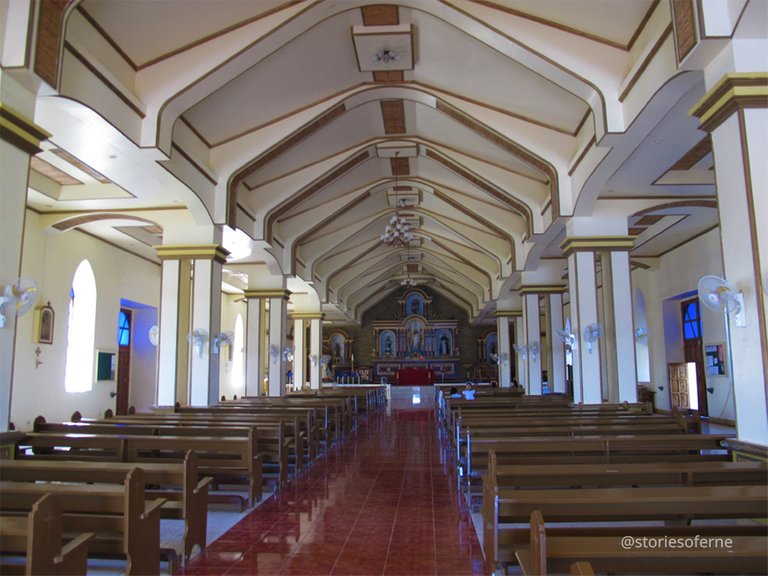
Currently, this bright yellow-colored edifice is called the Santo Domingo Church named after the capital city of Basco's patron saint. The church was subjected to several renovations and reconstructions due to massive damages caused by previous natural disasters like typhoons and earthquakes. Yet, the building survived amidst all the challenging weather conditions.
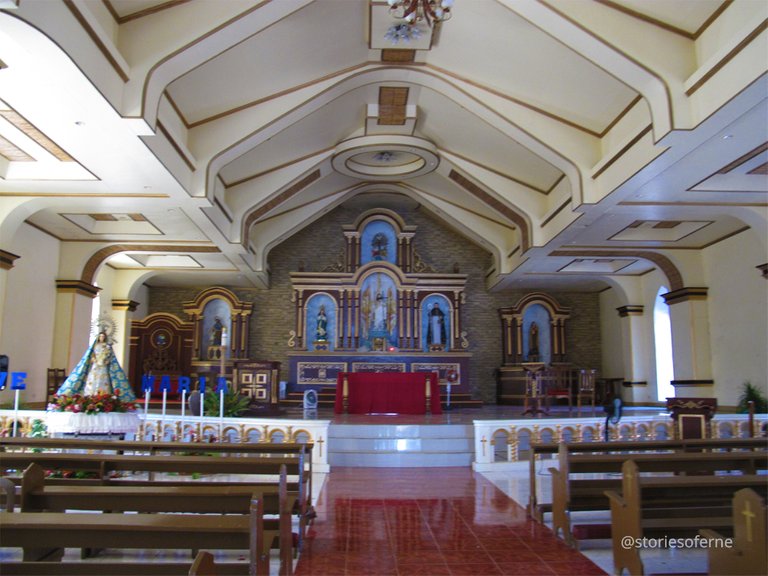
Since it was the month of May, we were also celebrating the popular feast of Flores de Mayo which was observed as a national festival in the entire Philippines. It's a religious-cultural practice where devotees offer flowers and other religious rituals to the Blessed Virgin Mary. The Santacruzan is the event's symbolic parade held on the last day of this month-long tradition. I happened to catch an adorable little angel inside the church grounds and didn't hesitate to capture a memorable photograph with her.
7. Vayang Rolling Hills
The next interesting landmark to explore on the island of Batan was one of the most obvious geographical features of the surrounding environment. You see, Batanes is endowed with several sprawling natural hills that descend and ascend endlessly in wave-like patterns that captivate the visual senses of onlookers.
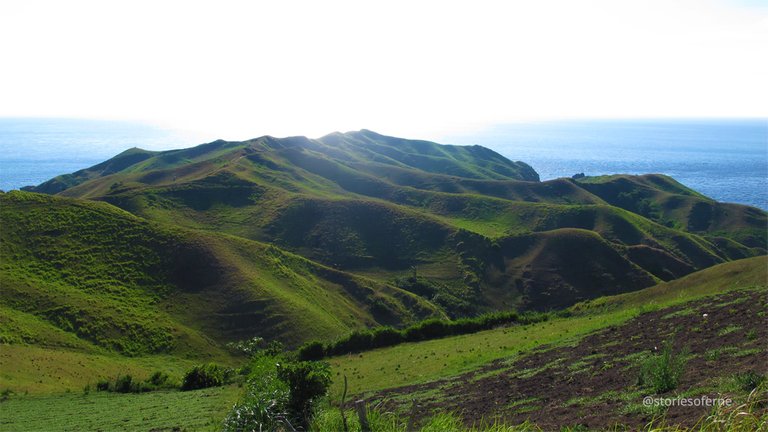
With just a few minutes away from the Poblacion (or Basco's city center), the Vayang Rolling Hills were excellent proof of the majestic splendor that laid waiting to be appreciated and explored. With unobstructed views of Mount Iraya, Sabtang Island, the West Philippines Sea, plus grazing cows and goats, I immediately fell in love with the place. I couldn't resist the beauty of the landscape that I felt so at home by lying down on the green sheets of grass as if they were my bed. Who wouldn't?
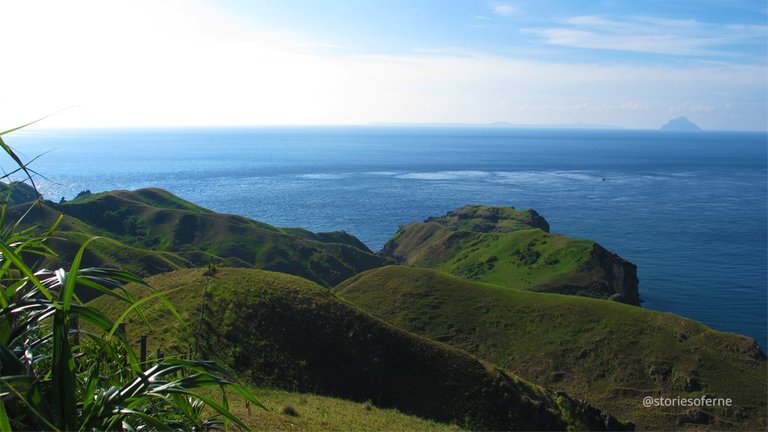
From this point, you could definitely enjoy stunning 360-degree panoramas of post-card perfect sceneries that were seemingly unbelievable to the naked eyes.
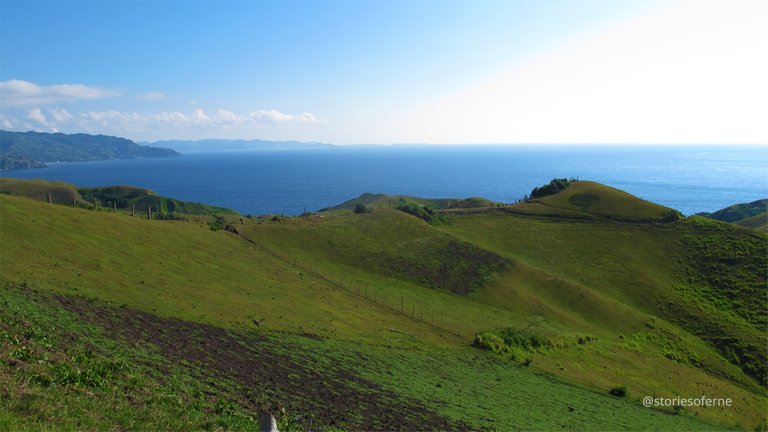
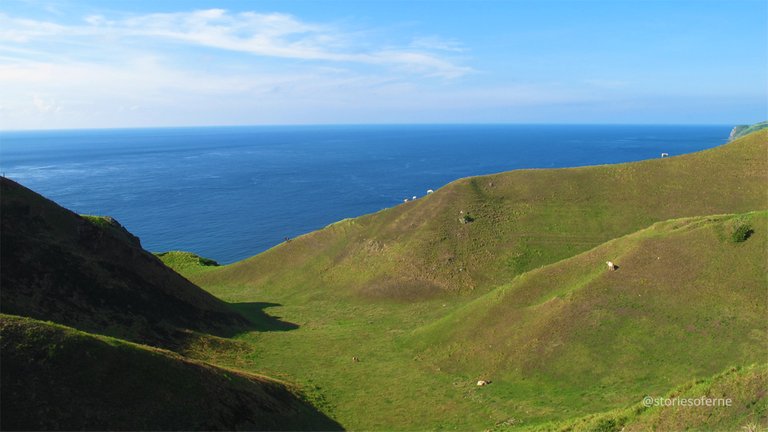
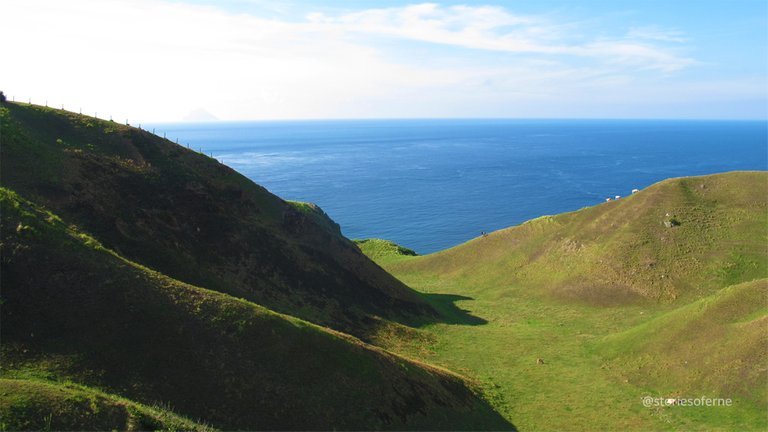
8. Basco Lighthouse
Located in Naidi Hills in the barangay of San Antonio, the Basco Lighthouse was just a short distance away from the Vayang Rolling Hills. This popular location was also a walking distance away from the Port of Basco. The bright sun was still up during that late afternoon and this was our last major landmark to visit for the day before it became dark.
Aside from being functional facilities, this distinctive structure was also transformed into a tourist attraction and was one of 3 major lighthouses in the province. The other 2 were located on the islands of Sabtang and Mahatao.
The architectural profile of the lighthouse was equivalent to a building with 6 levels (height of 20 meters/66 feet) with a dedicated viewing deck in the fifth floor. Beside it was a vernacular-styled dwelling that mimicked the traditional Ivatan houses made of stone or rubble masonry.
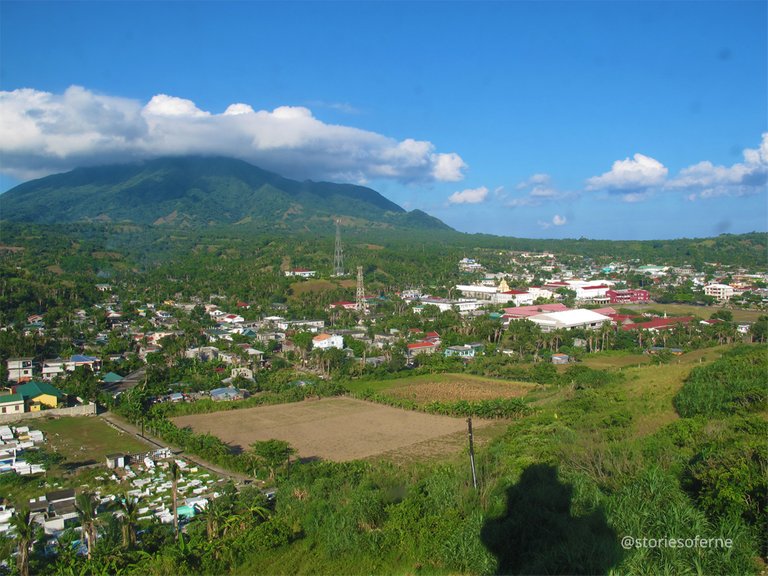
After checking out the neighboring grounds of the tower, I went inside to access the staircase leading to the viewing platform above. I was obviously ecstatic when I stepped on the deck because it was certainly one of the perfect spots to admire the entire province of Batanes.
From there, I got to see breathtaking views of the majority of Batan Island from one end to another, the majestic Mount Iraya, the city of Basco, Sabtang Island in the south direction, surrounding blue seascapes, and Itbayat Island when viewed to the north.
Nighttime fell and our stomachs were already grumbling as we proceeded to Ivatan Pension House to end the day with sumptuous servings of seafood and other local Ivatan dishes for dinner.
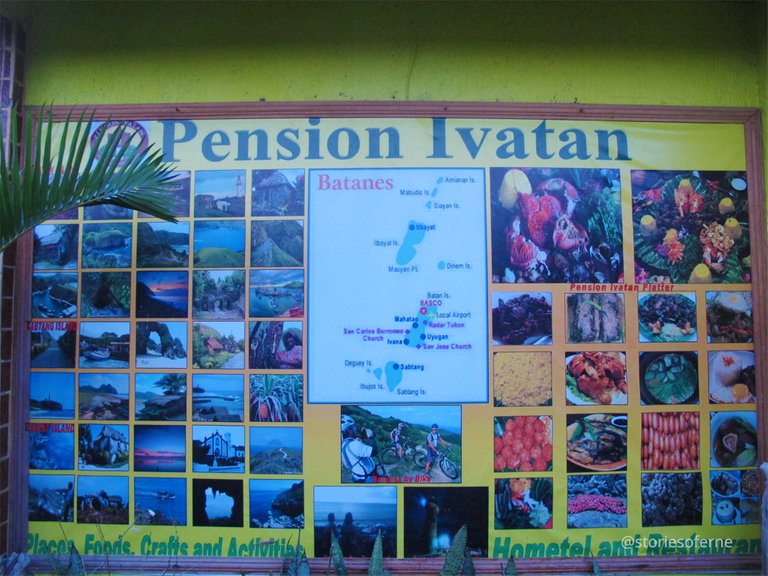
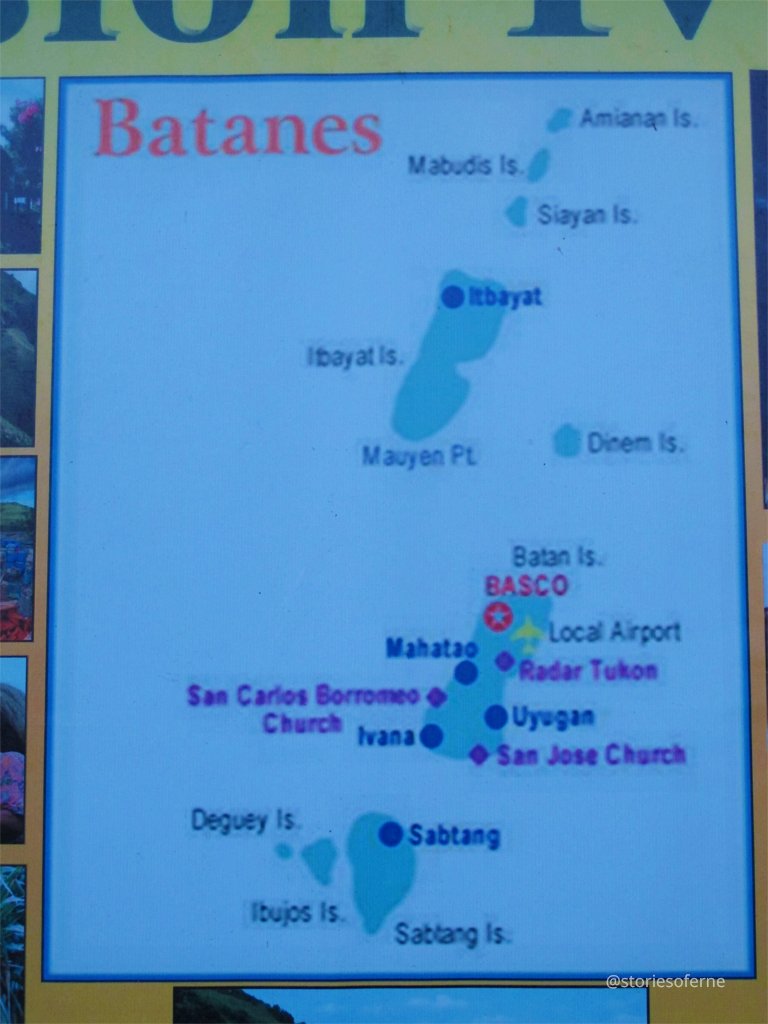
9. Bernardo's Hotel
Because we were a large group, the adventurers I was traveling with stayed at different hotels scattered throughout Basco. I checked-in at Bernardo's Hotel, a small but decent accommodation situated just 20 meters away from Chanarian Beach edging the western coastline of Batan Island. After an early morning breakfast at the hotel, I went straight to this nearby beach to take a quick dip and to enjoy the glorious sunrise with it. While swimming, the sun's rays glittered across the crystal-clear waters as they also greeted me as the day started.
Bernardo's Hotel was a recently-launched budget hotel with 8 air-conditioned spacious rooms housing the total bed capacity of 27 people. It's not as grand as you'd expect from a countryside accommodation due to the laid-back atmosphere of the province.
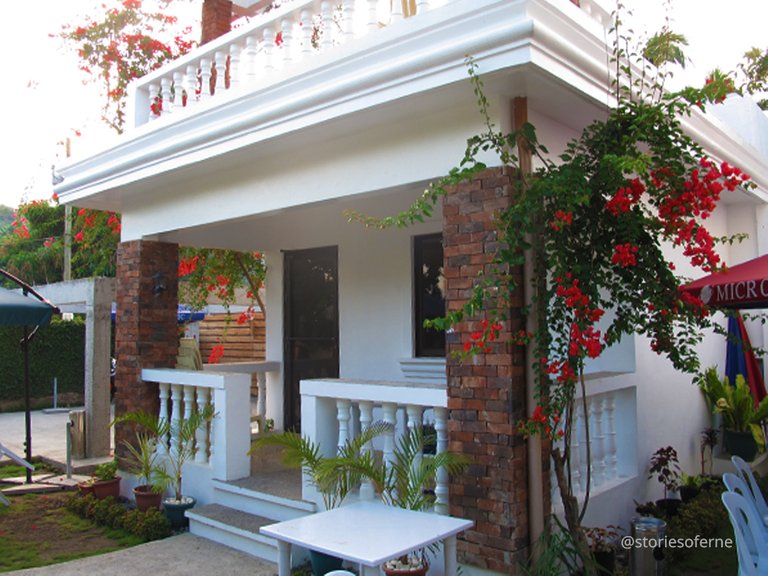
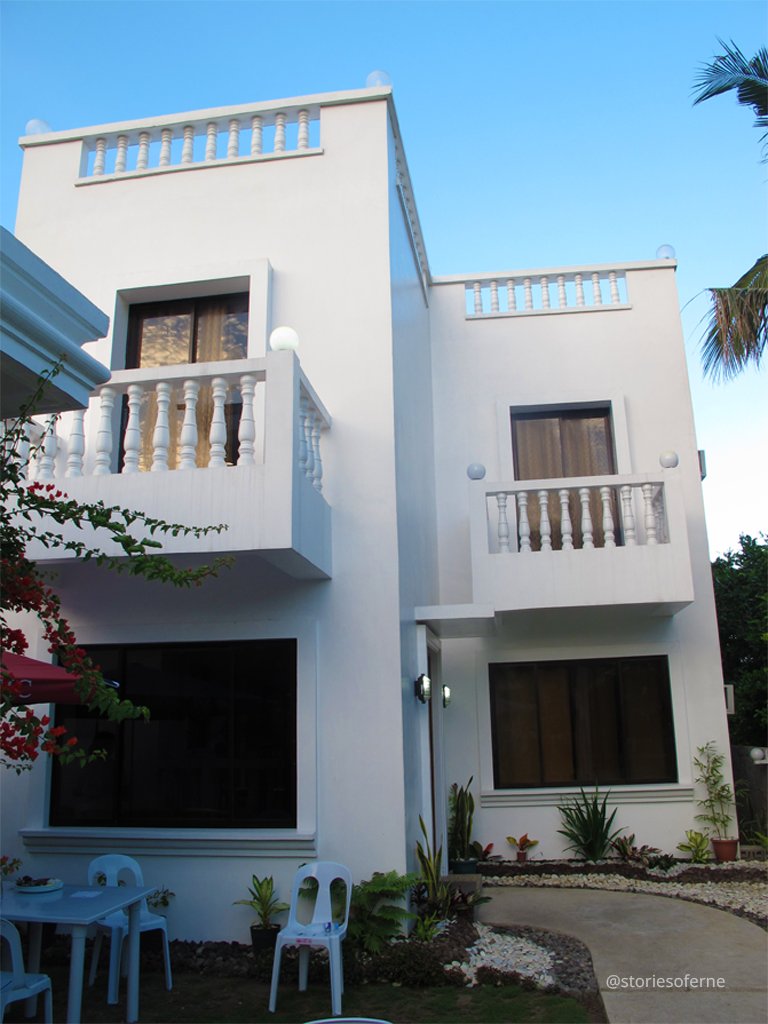
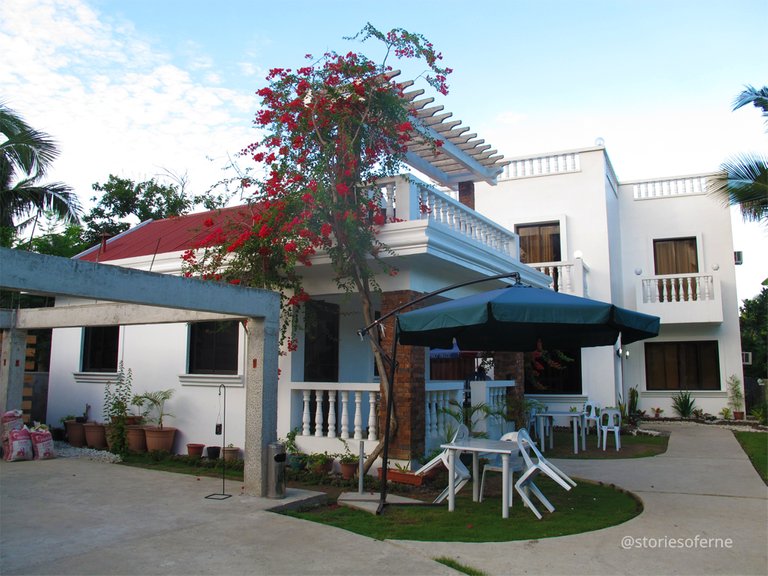
The hotel was also home to Casa Napoli, a pizza joint considered to be the best and tastiest pizza in town as these delicacies were baked from a brick oven.
10. Port of Ivana
This was Day 2 of the trip, and everyone was getting ready as we rode on our tourist vans to head to the municipality of Ivana, a locality at the southwestern side of Batan Island. After a few minutes on the road, we arrived at the Port of Ivana to prepare ourselves for a boat ride going to the island of Sabtang. This was the group I was traveling with. And to ensure the safety of everyone on the rough seas, we were instructed to wear lifejackets for an enjoyable and secure boat cruise. Say cheese!
This would our best chance to fully experience the Faluwa, the traditional boat of the Batanes Islands. It was a low type of sea vessel that was built without the bamboo outrigger or "kalig" (a canoe stabilizer) and has a built-in motor to power up its travel speed over aquatic environments.
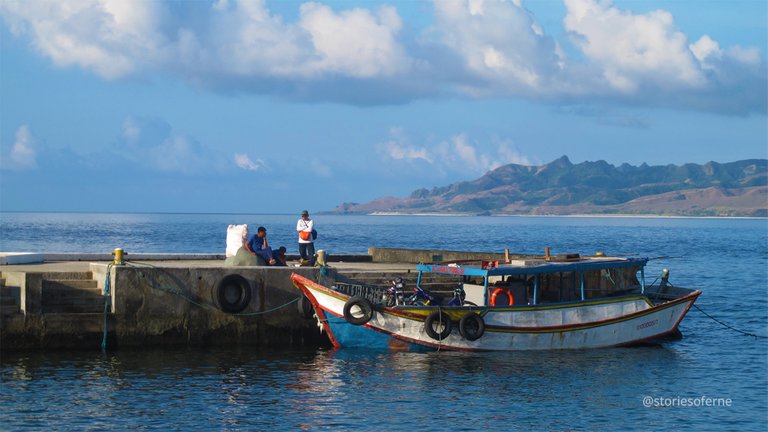
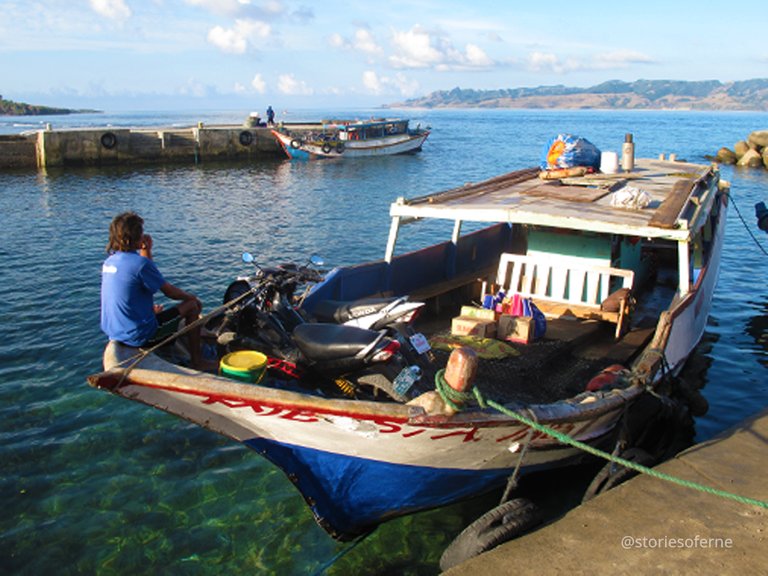
Because it was a low-lying craft, we could actually touch the water level while we traversed the constant pounding of the sea waves. The Faluwa could accommodate 50 - 70 passengers, and surprisingly, our voyage was a breeze regardless of the massive ocean currents that challenged our ride during that time.
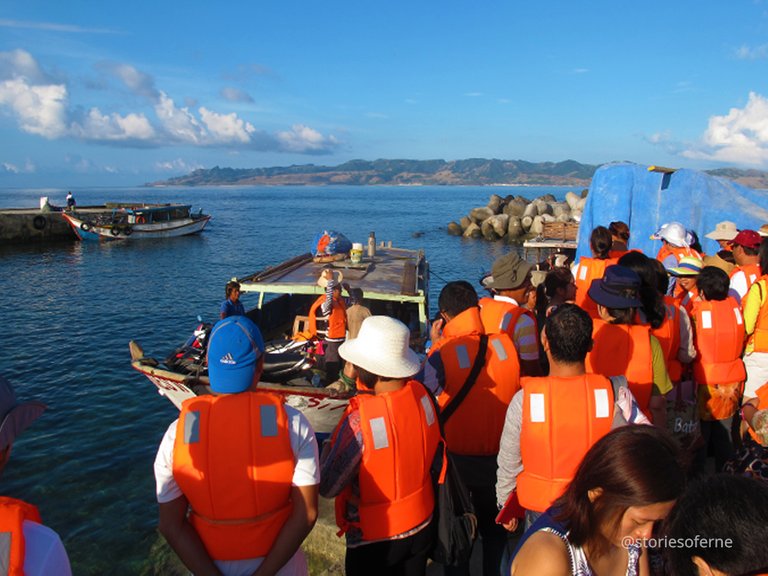
Yet, if you're the kind who suffers from seasickness, and are scared of the boat being tossed back and forth by the unrelenting waves, it's advised for you to remain calm, take a deep breath, and focus your attention on the neighboring landscapes instead of the sea.
While on the water, I was captivated by the surrounding sceneries of nature. My wild imagination also noticed a mountainside that appeared like a person's face when lying down. (Look at the photo below and you'll see what I mean.)
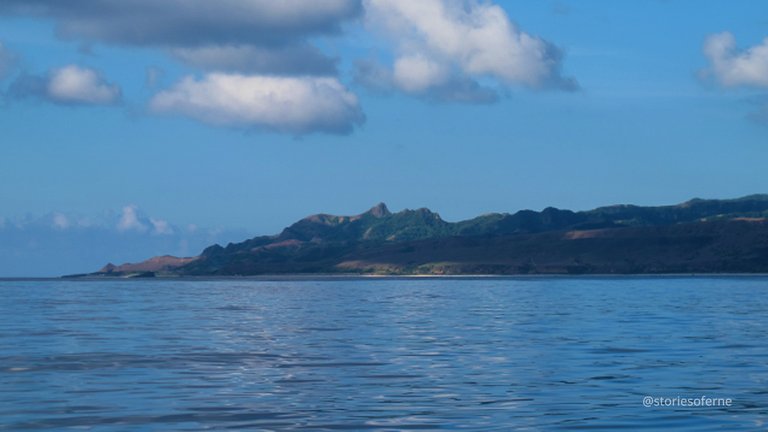
As we were nearing the Port of Sabtang, the island's prominent landmarks and main lighthouse could be seen standing bravely on the landmass to guard the entry point and guide seafarers to the pier area.
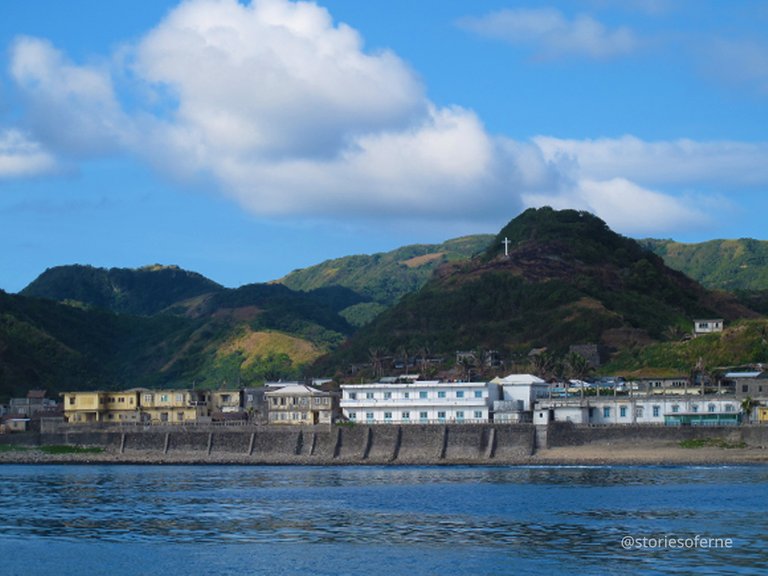
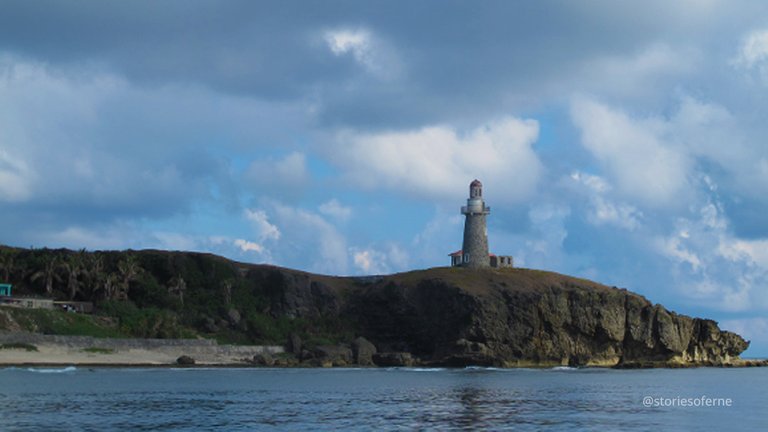
11. Port of Sabtang
After approximately 45 minutes of cruising on the water, we finally docked at our destination. It was a small port but the atmosphere of hospitality was tremendous and inviting due to a large number of smiles and greetings that approached us as we disembarked the Faluwa and transferred on the stepped shoreline.
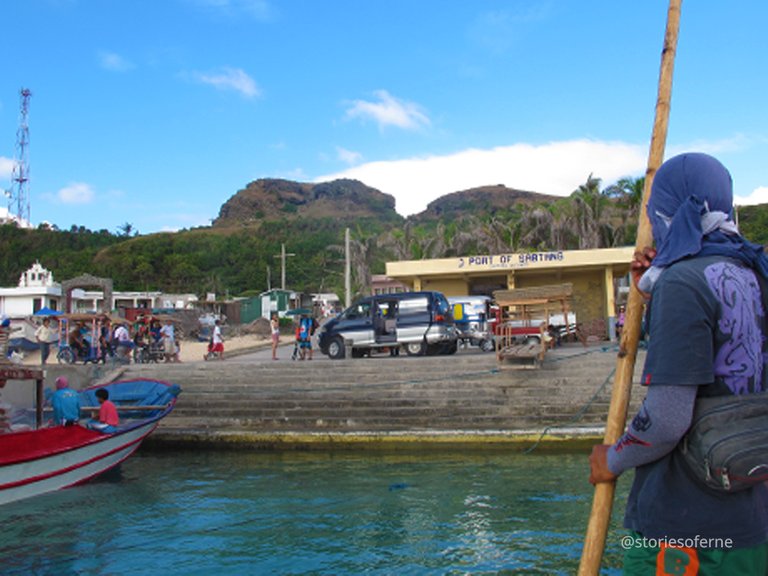

To strengthen and maintain the cultural identity of Sabtang Island, the Ivatans retrofitted their tourist vehicles with cogon grass roofing features. Take for instance this pedicab, tuktuk, or tricycle (3-wheeled motorcycle) and a small pick-up truck that reflected their local practices. These were the modes of transportation we boarded for this specific island expedition as our tourist vans were left in Batan Island.
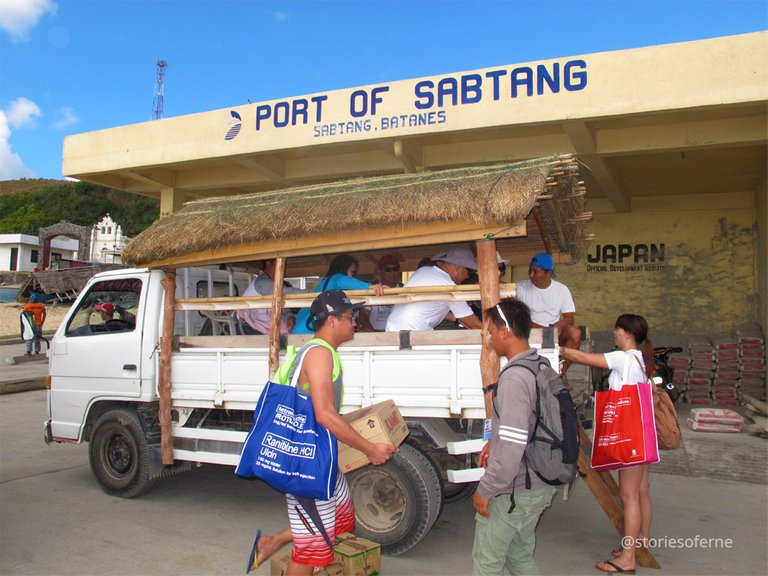
While the group was busy preparing for this trip, I likewise took the opportunity to capture some lovely shots of the port area and the surrounding sceneries.
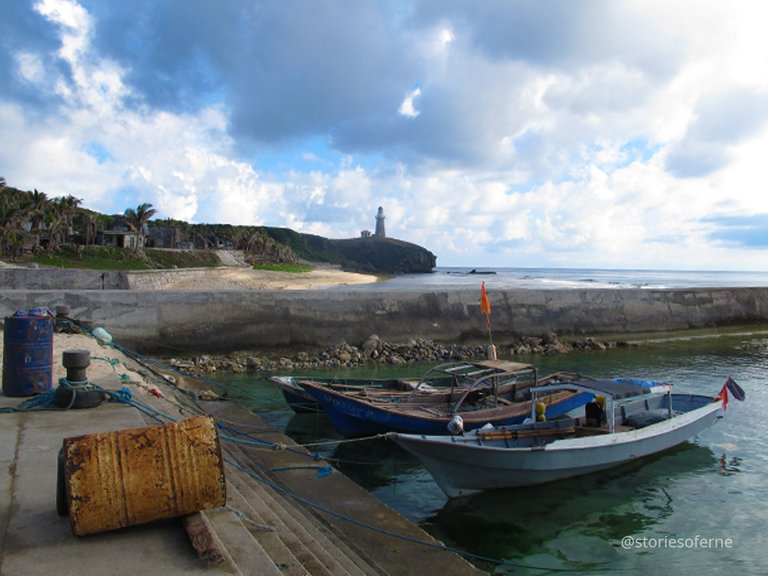
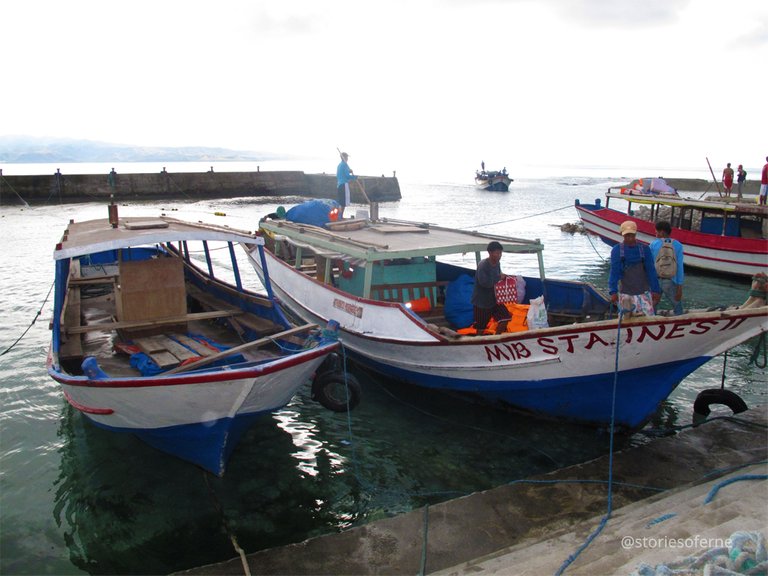
12. Savidug Stone Houses
Our next stop and the first one to visit on the list of landmarks for Sabtang Island was the humble village or barrio of Savidug. Here, we investigated a century-old region where ancient dwellings of the Ivatans were constructed. The majority of the built environments here had similar distinctive elements that defined these impressive works of architecture and became one of the iconic symbols of Batanes.
The Savidug residential habitats were classified as the Sinadumparan type of stone houses where 2-sloped cogon roofs and meter-thick masonry walls were the dominant architectural features. Despite the structural stability of these houses, some were still ravaged by visiting storms and typhoons that caused their untimely destruction.
Moreover, because of the unique cultural characteristics of these stone houses and local traditions that remained intact in the area after many years, they became candidates for inclusion in the UNESCO World Heritage Sites list.
I could just imagine the amount of labor these locals had to invest to build these homes. With their limited knowledge about architecture and engineering, they were able to fabricate structurally stable and visually-appealing traditional houses during the ancient period.
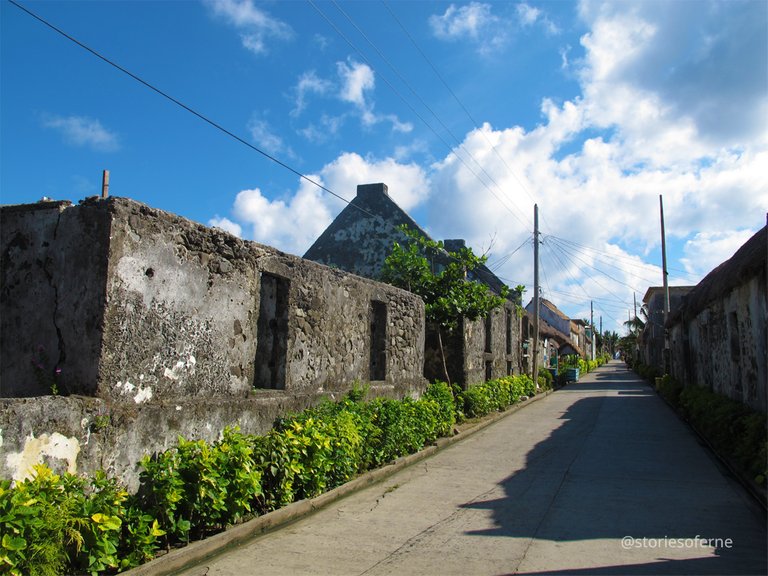
13. Idjang (Ancient Ivatan Fortress)
Still, within the Savidug neighborhood and on our way to the next destination, we passed by an unusual piece of historical edifice planted on top of a hill. It was a rare sighting that immediately caught our eyes because of its peculiar design. At first glance, I thought it was just part of the hillside but after looking closely, I saw it - it wasn't obvious due to the structure's ability to merge and be camouflaged with its surroundings. We were actually looking at an Idjang, the Ivatan term for fortress.
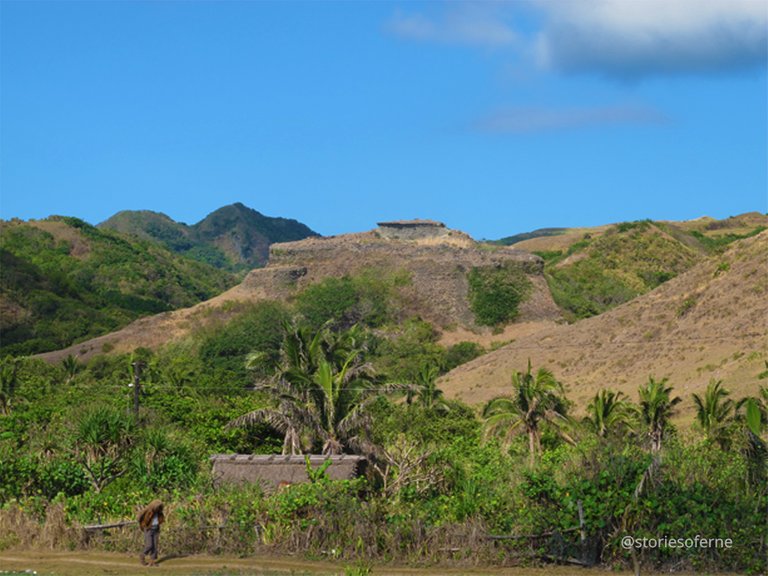
This particular site was only one of 17 similar structures built around the entire island of Sabtang. An Idjang was an elevated triangular-shaped citadel embedded on hilltops that were made of limestone, wood, and other indigenous materials. They mainly served as reinforced fortifications for protection against warfare and was also utilized as a lookout point for incoming invaders.
Along the way, we also stopped by a Philippine date palm, locally known as Voyavoy. These plants were the main ingredients in the creation of their traditional wardrobes, sleeping mats, material containers, utility bags, baby cribs, and other useful household tools.
As we continued on our journey, I was captivated by the surrounding lush landscapes and hilly terrains that I couldn't stop clicking my camera while aboard the tourist vehicle.
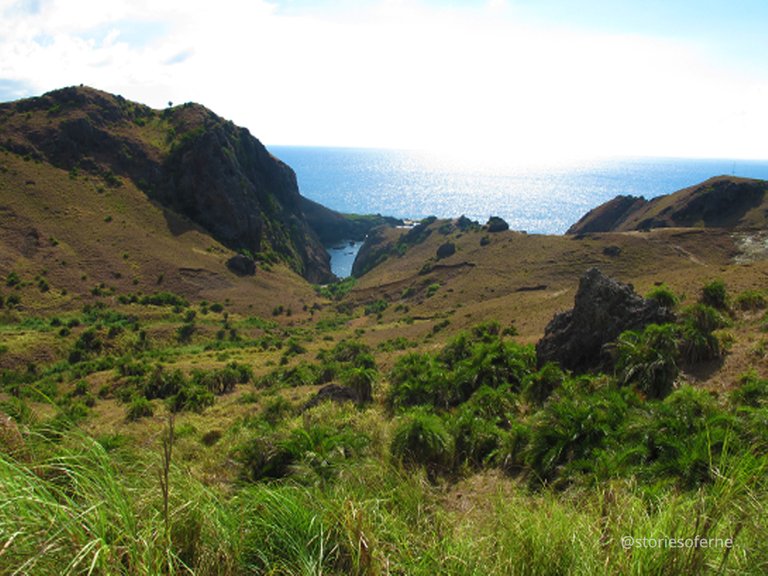
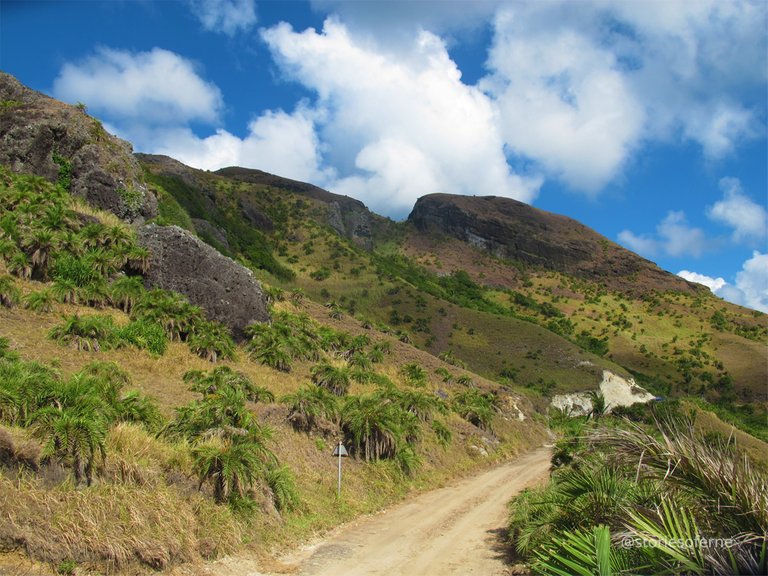
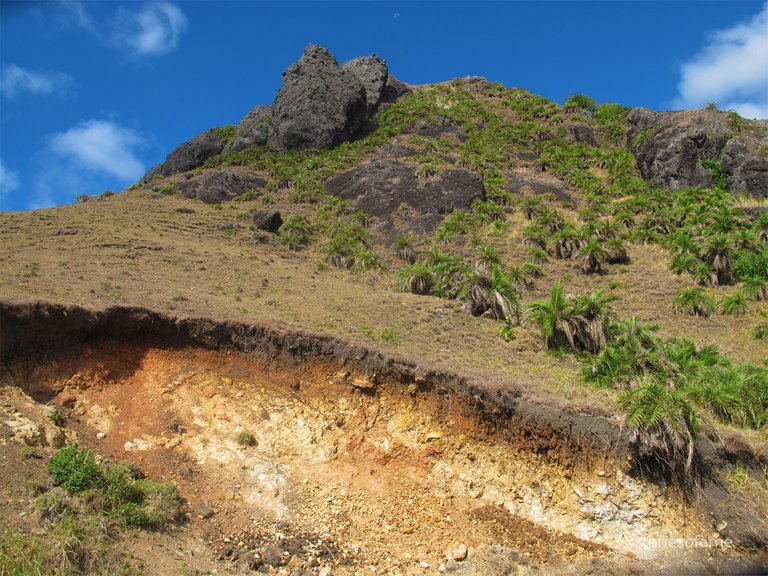
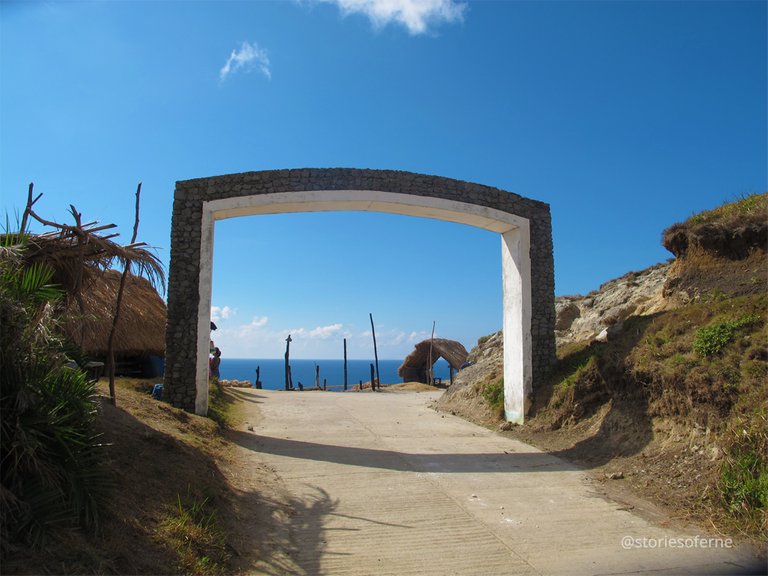
Ivatan Traditional Costume
Afterward, we also made a brief stopover to a special area in the hills where we could try out the Ivatan traditional wardrobes. These pieces of ethnic clothing were made from the Voyavoy plant's abaca fibers and were primarily tailored as protective gear to combat nature's harsh weather conditions.
For men's clothes, they fashioned the Talugong (Ivatan name for farmer's hat), paired with the Kanayi (vest), and Pasiking (big basket). Do I look like a local?
On the other hand, women sported the Vakul (Ivatan term for headdress or headgear), plus the Alat (small basket) to complete their wardrobe set. Out of curiosity, I had to try their clothes to experience what it felt like under the heat of the sun. What do you think about this outfit?
While continuing on the road trip, we also witnessed Sabtang Island's interesting geographical terrains and stunning white-sand beaches. And what a magnificent sight it was!
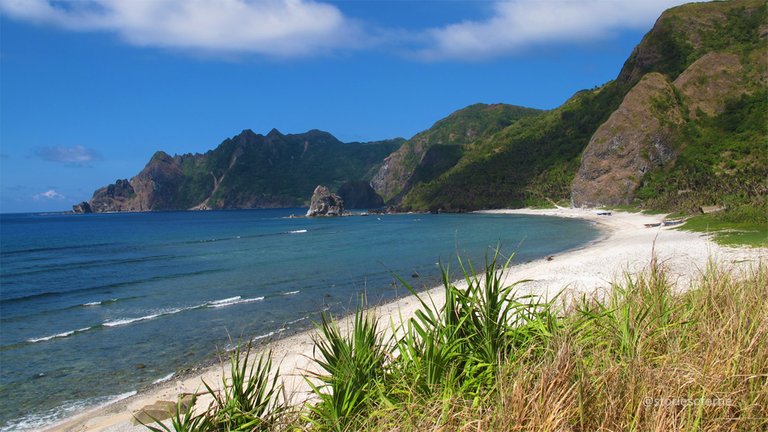
14. Barrio Chavayan
The next landmark of the tour was a tiny remote village that could only be accessed with one cliff-side road coming in and out of this isolated location. We finally arrived at the old Barrio of Chavayan, a land area surrounded by seascapes and mountainside cliffs.
The Chavayan village was not frequented by foreign nationals but was only visited by local tourists which made the place peaceful and undisturbed from the typical activities that massive tourism can sometimes contribute to ruining a popular destination.
Like the village of Savidug, the barrio of Chavayan also had its share of ancient stone houses that aged up to 100 years old. Within the vicinity, we also found the Sabtang Weavers Association building where we saw a variety of their local handicrafts like the notable Vakul, and other Ivatan traditional wares.
Another important sacred building within Chavayan was a chapel with a cogon roof, the only one of its kind in the entire province of Batanes.
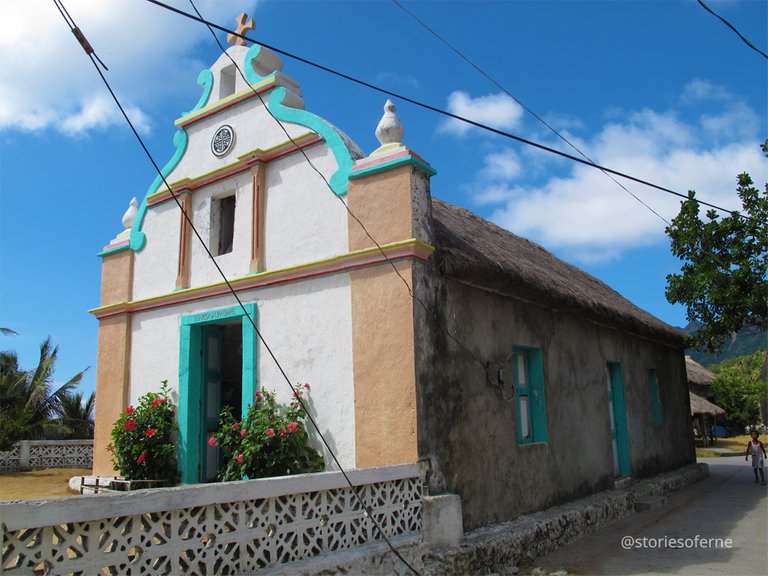
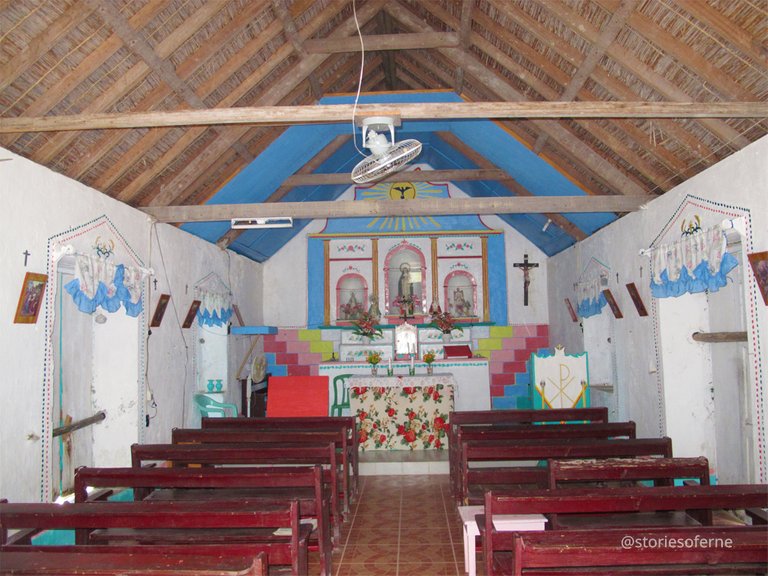
Chavayan had a unique allure of its own. And we clearly saw it through the hillside cliffs, breathtaking beaches, and surrounding flora. Indeed, the place was another perfect spot for picturesque natural landscapes!
15. Morong Beach (Natural Stone Arch)
The last destination to explore on the island of Sabtang for that day was the well-known Morong Beach (sometimes called Nakabuang Beach by the locals), also hiding a gem in the form of a natural stone arch (called the Nakabuang Arch) within its shores. This prominent geographical feature is widely popularized in photos and other media and is probably the most famous iconic symbol for the province of Batanes.
Upon arrival, I didn't waste my time and immediately hurried to this specific landmark to set my memorable place in history. I was jumping up and down with joy as I captured all the striking photographic poses one could imagine with my camera.
Aside from the natural stone arch, the nearby beach was a sight to behold. The greenish-blue waters were crystal-clear, the vibrant and lush hillsides, plus the sugary-white seashore offered an inviting temptation that even hesitant swimmers would take a plunge.
We also had our delayed lunch here. Close to the beach were some restaurants that served seafood and other typical Ivatan dishes. It was time to eat!
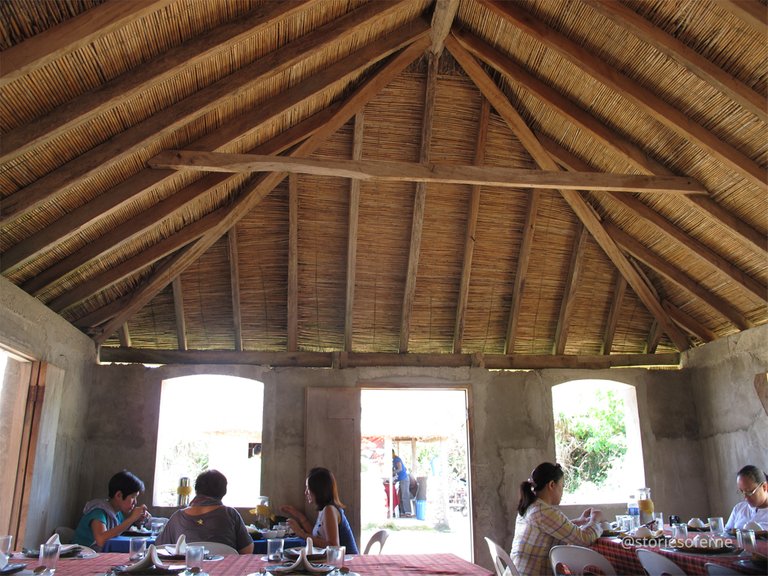
Some of the mouth-watering food and special delicacies we ordered included white and turmeric rice, sweet and sour fish, Ivatan-style braised pork, mixed vegetables, rounds of "Bukayo" (sweetened coconut dessert), and selected beverages. While some of my companions settled with spoons and forks to devour the meals, I used my clean bare hands to enjoy the delicious servings. ("Kamayan" in Tagalog or "Kinamot" in Cebuano is the local expression for eating with your hands.)
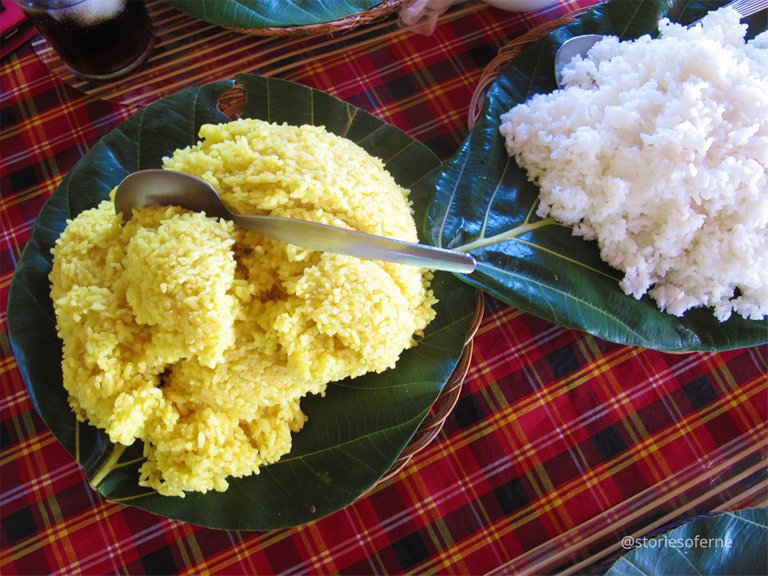
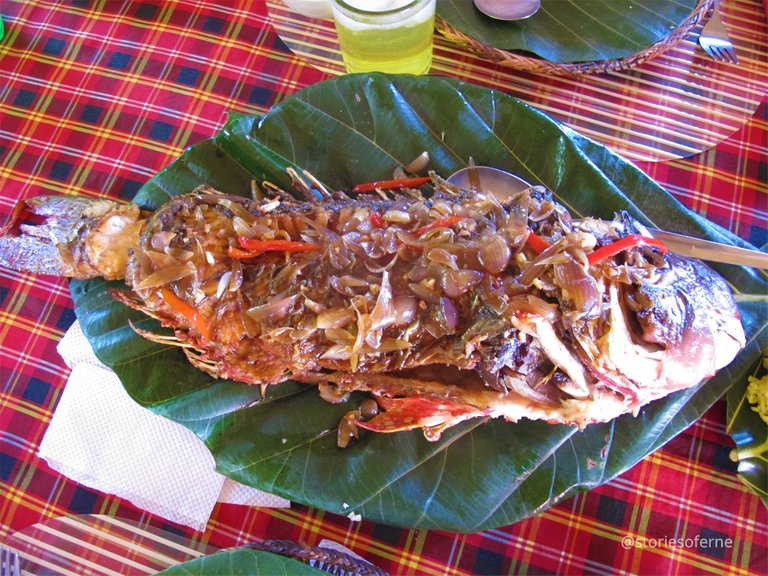
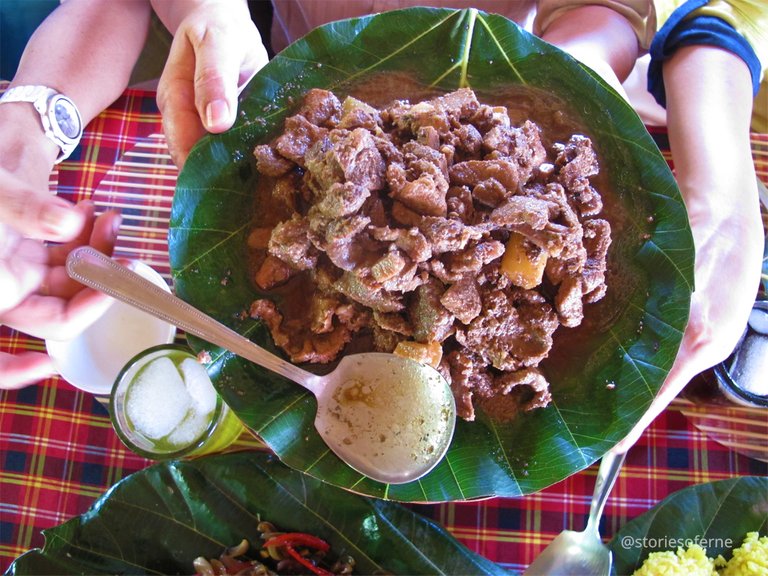
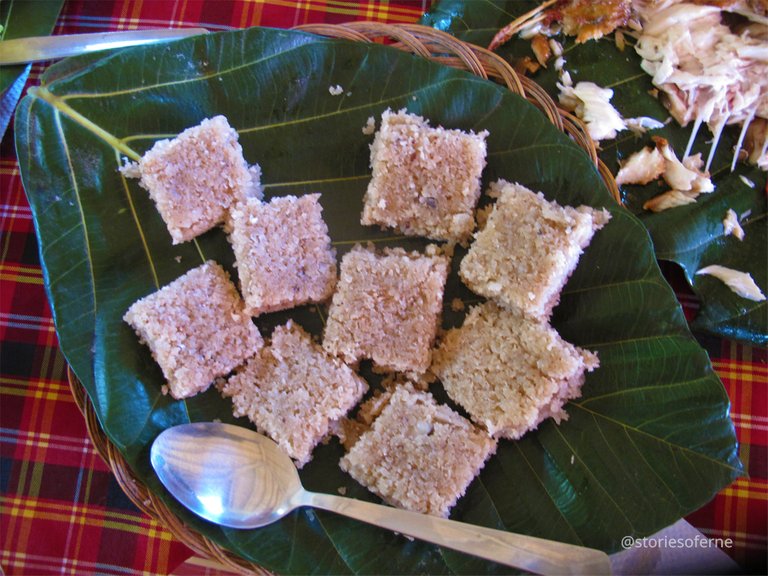
We missed one of the most famous culinary favorites Batanes has to offer: the coconut crab. During our visit there, it so happened that coconut crabs were strictly banned for consumption due to their diminishing population and were labeled an endangered species. Hence, I just took a picture of the popular aquatic creature printed on a souvenir t-shirt.
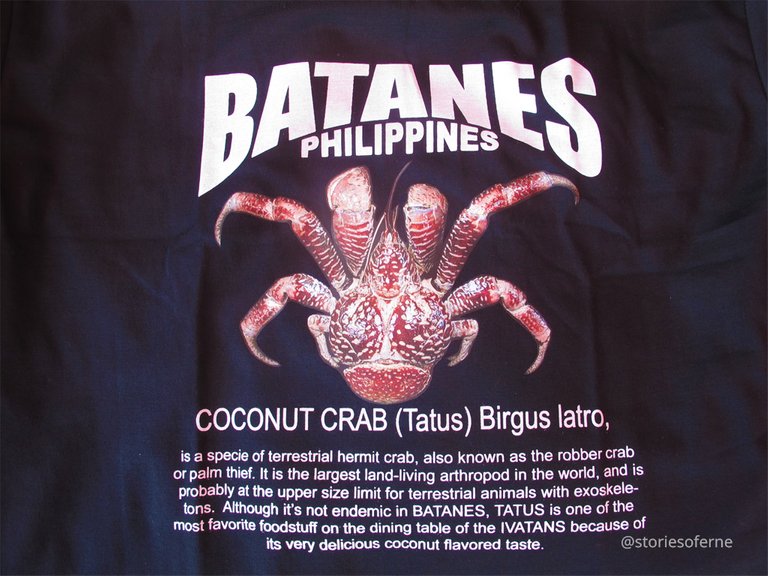
With vivid memories still trapped in my thoughts, this was my last view of Morong Beach as I bid farewell to the soothing seascapes, captivating landscapes, and sugary-white sand dunes of this magnificent stretch of nature in Sabtang Island.
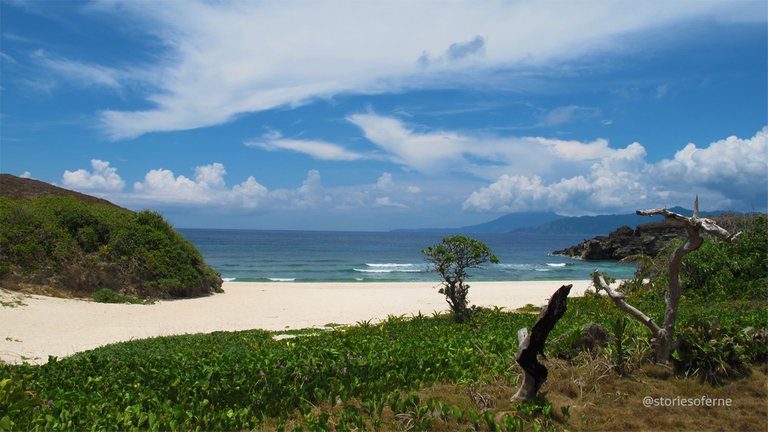
Please stay tuned for part 2 (concluding half) of this travel article. Until next time, take care and keep exploring!
#Hive, have you been here?
Wow! I am bookmarking this! Yohann and I have written Batanes in our bucket list. I didn't know about their short and high runway that leads to a volcano. That alone is an adventure 😀. All I know is that even before the pandemic, they have limited flights to get there and they are expensive. But worth it though because Batanes' landscape, culture, and architecture are unique. Their architecture is pretty cool! Haha, you look great in the abaca fiber vest!
Yes that’s a great decision! Batanes is certainly one of the few remaining heritage gems of the Philippines, and it’s best to appreciate its natural beauty and cultural splendor while it’s still existing. Thank you so much for your wonderful thoughts!
Congratulations, your post has been added to Pinmapple! 🎉🥳🍍
Did you know every user has their own profile map?
And so does every post as well!
Want to have your post on the map too?
Congratulations @storiesoferne! You have completed the following achievement on the Hive blockchain and have been rewarded with new badge(s) :
You can view your badges on your board and compare yourself to others in the Ranking
If you no longer want to receive notifications, reply to this comment with the word
STOPDaily Travel Digest #997.
Become part of our travel community:
- Join our Discord
- Learn more about our travel application
Hiya, @LivingUKTaiwan here, just swinging by to let you know that this post made it into our Honorable Mentions in Your post has been manually curated by the @pinmapple team. If you like what we're doing, please drop by to check out all the rest of today's great posts and consider supporting other authors like yourself and us so we can keep the project going!Hello @livinguktaiwan and to the @pinmapple team! Many thanks for the feature!
Wow!
Thanks for sharing the details.
Thanks a lot @chadayan for the appreciation! It’s my pleasure to share my travel story.
Woww...been in Phil a year and I didnt know this wonderful place. Thanks for sharing and will bookmark it as a must-see place when I come back.
Great post 😍
It’s definitely worth it to always come back to the Philippines. Our people will warmly welcome you and will make you feel at home here @trangbaby. Thank you so much for including Batanes in your list of favorite travel destinations!
I have to say that Filipino is the most friendly and genuinely kind in the world. I will definitely come back..there still many stunning places I want to visit 💪
Thank you for the wonderful compliments! 😊
I will get there one day - balang araw.
Yes you will @imawreader! And I wish you all the best in your journey! Thanks a lot!
wow beautiful place ,really i liked your journey and post very much
I’m glad my travel story has touched and inspired you. Thank you so much @yousafharoonkhan for your wonderful comment!
Very beautiful place I wish one day I am there. Thanks for sharing.
Batanes is indeed one of nature’s most marvelous creations! And I encourage you to visit this place one of these days - you’ll truly enjoy it there. Thank you so much @tonmoy99 for the appreciation!